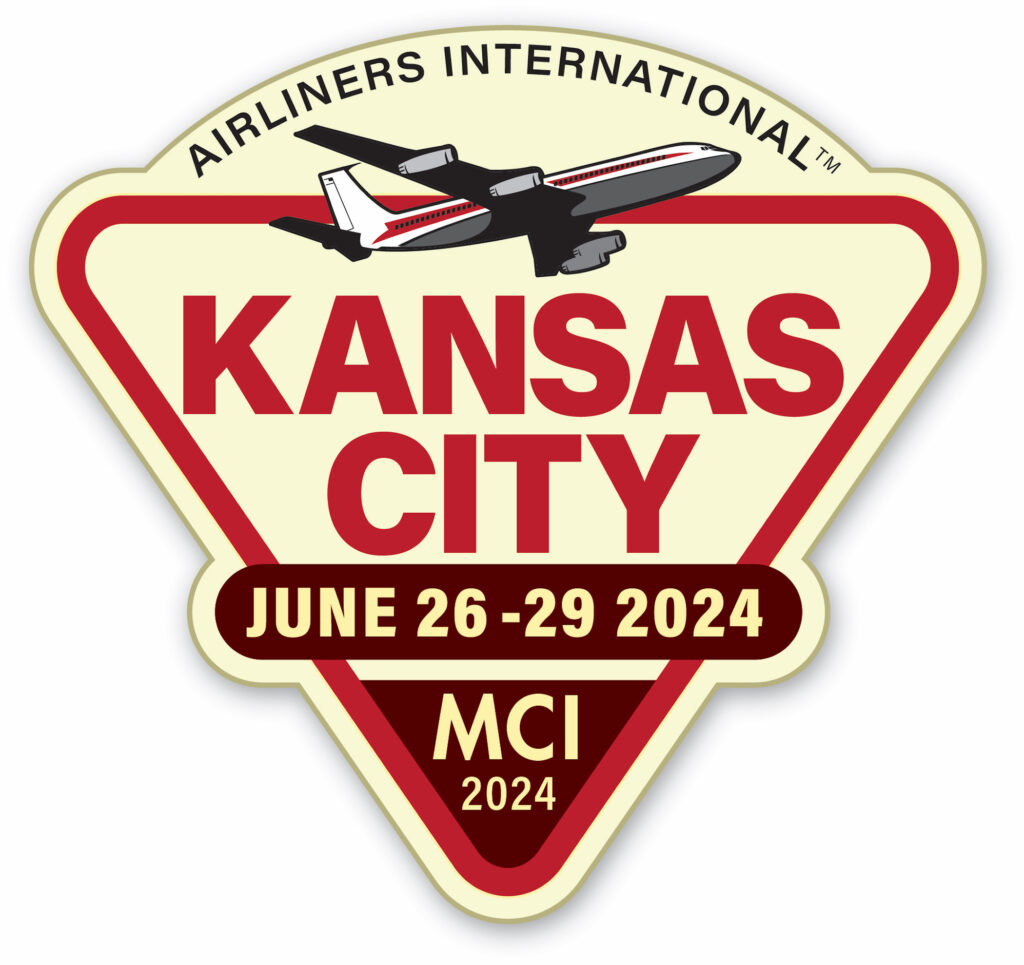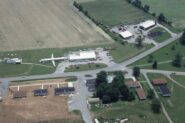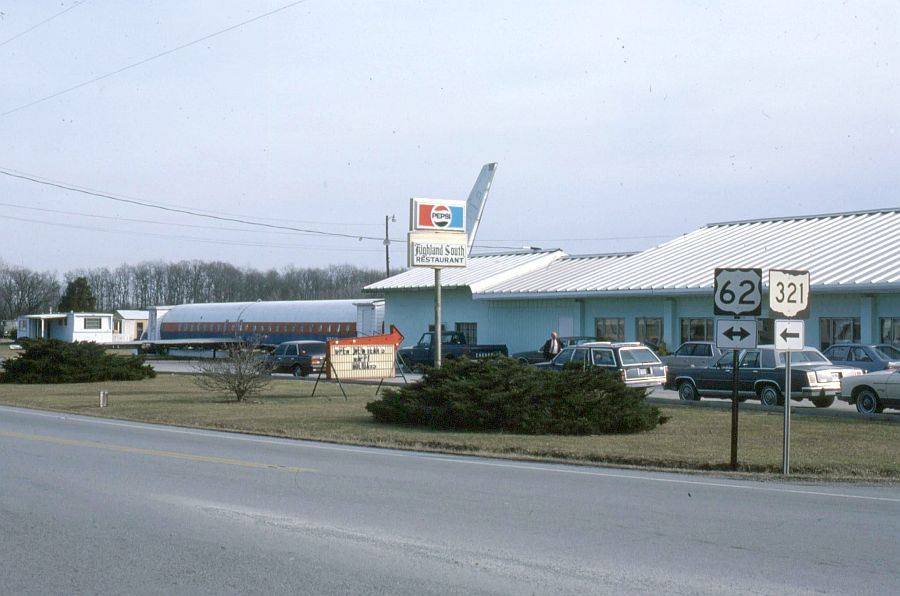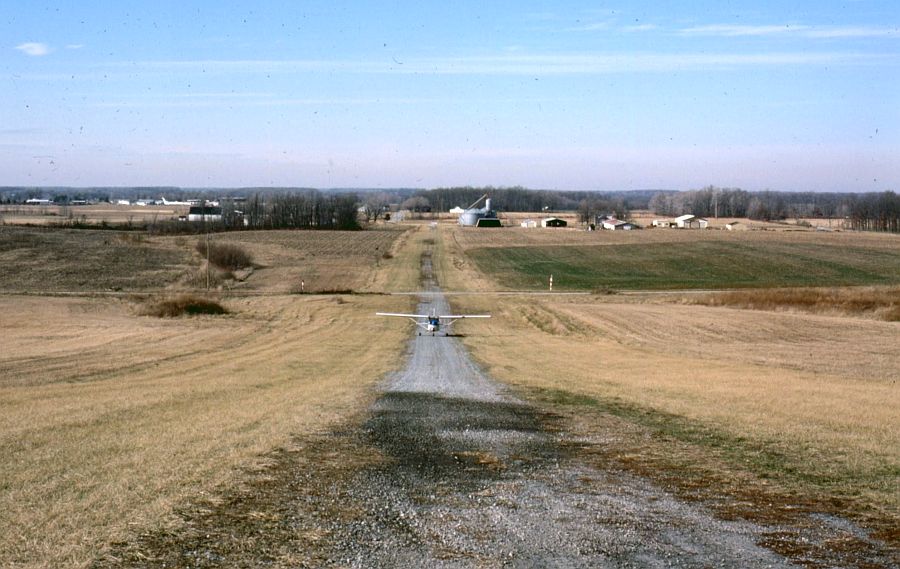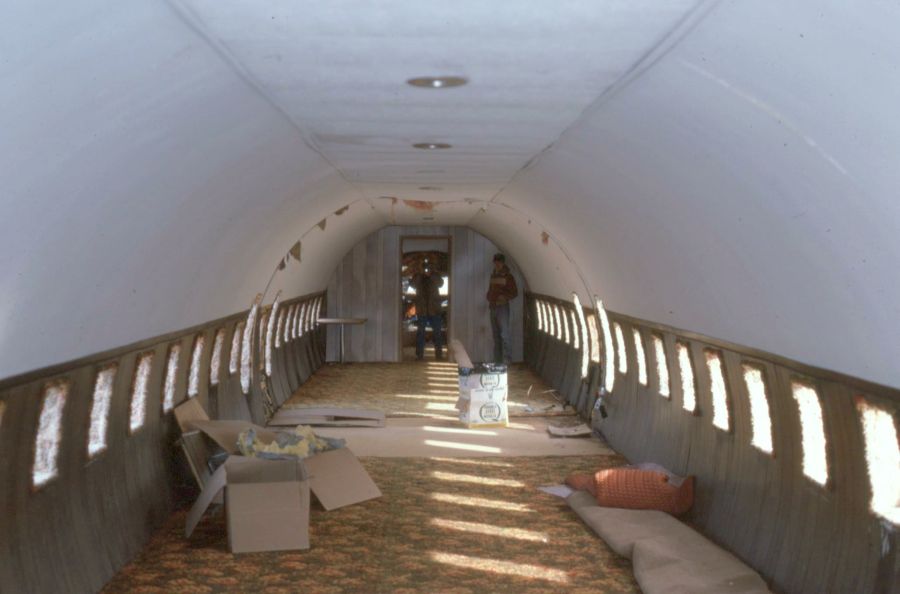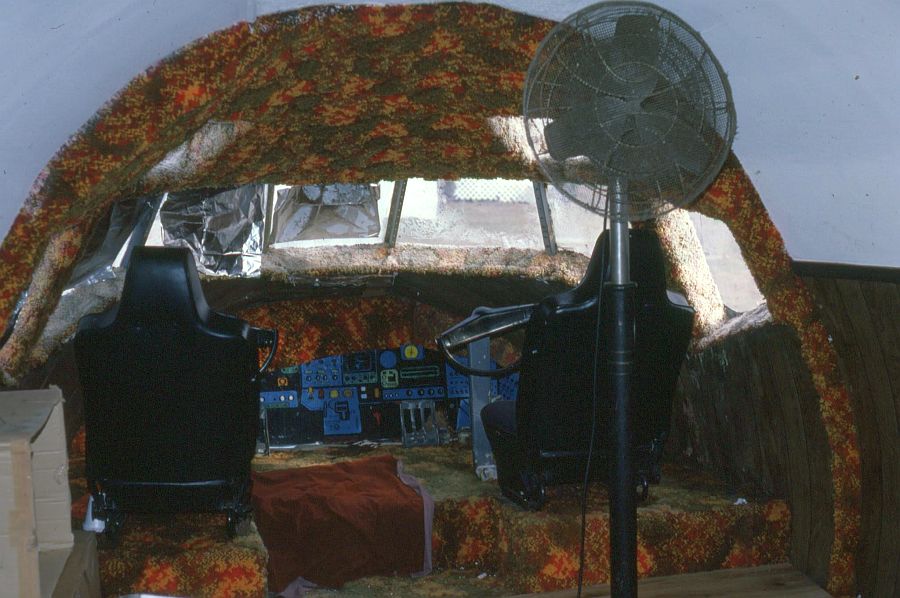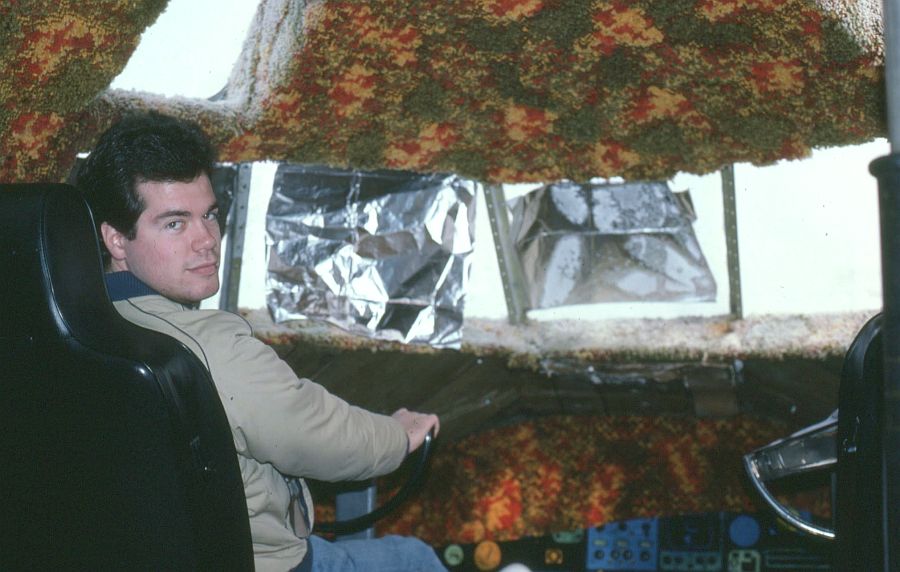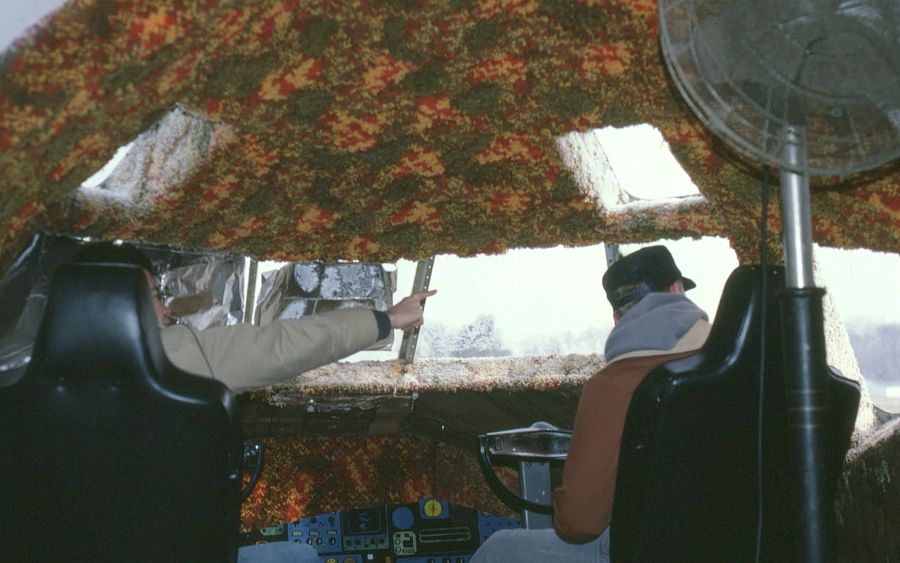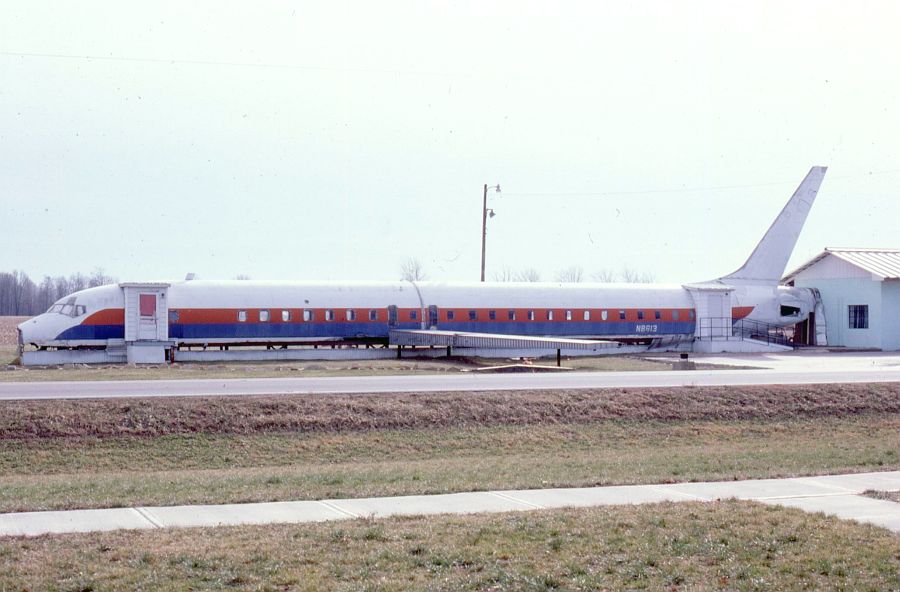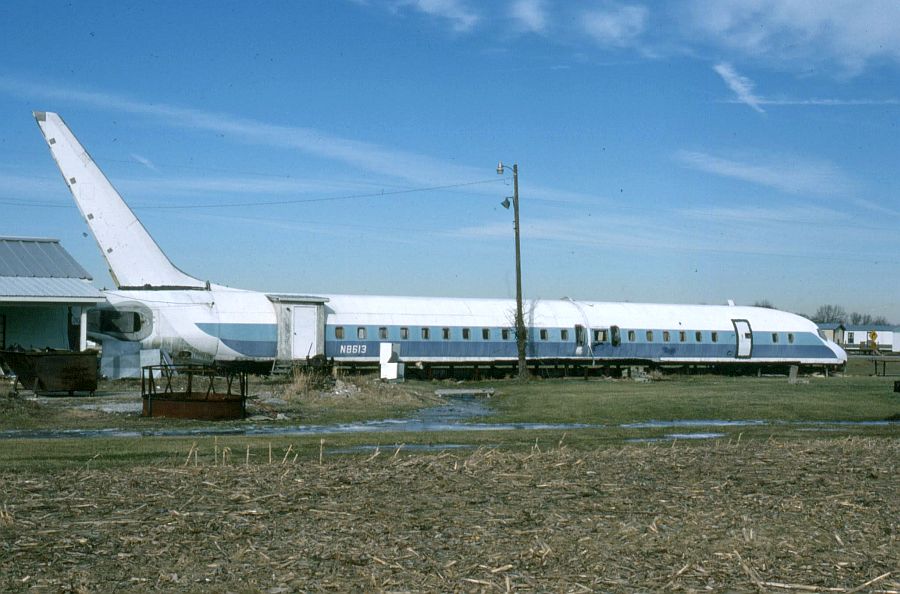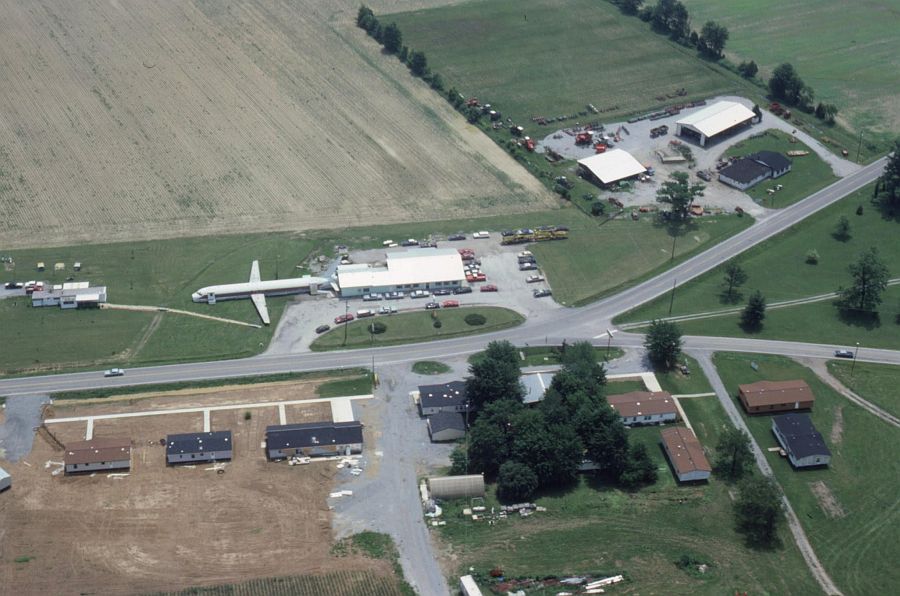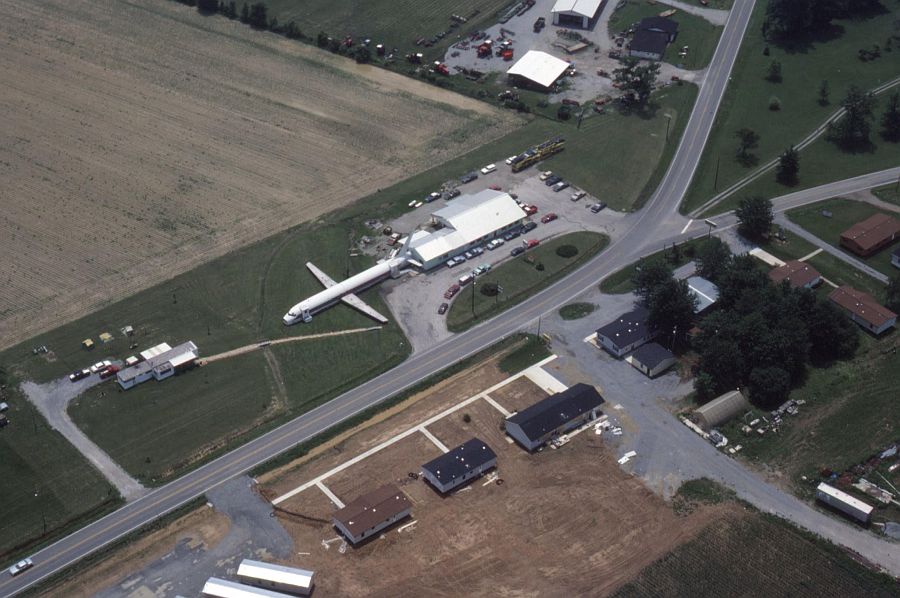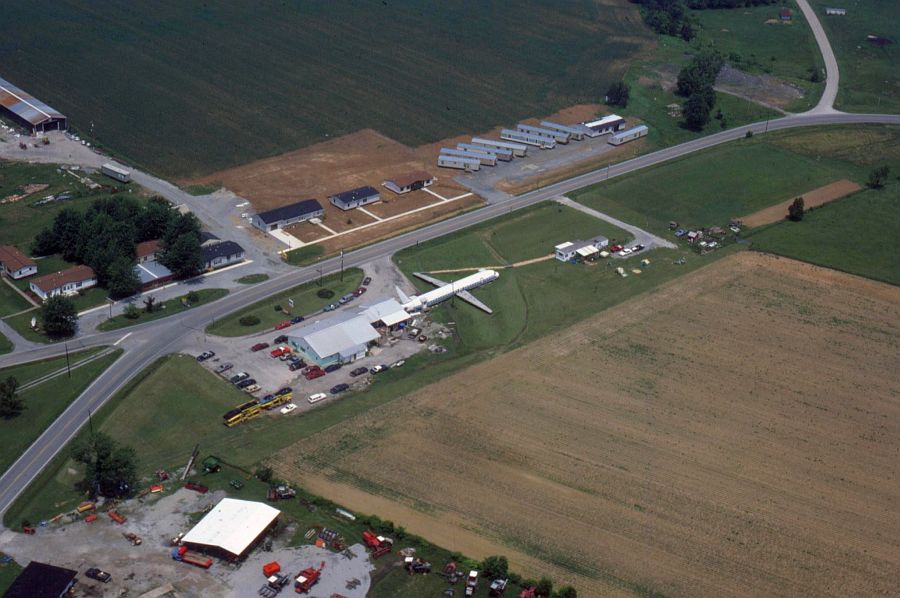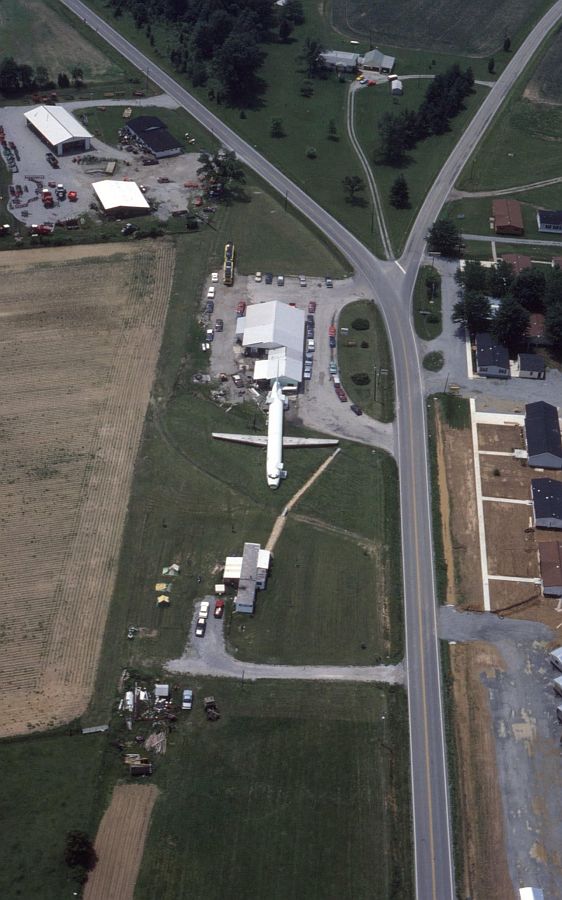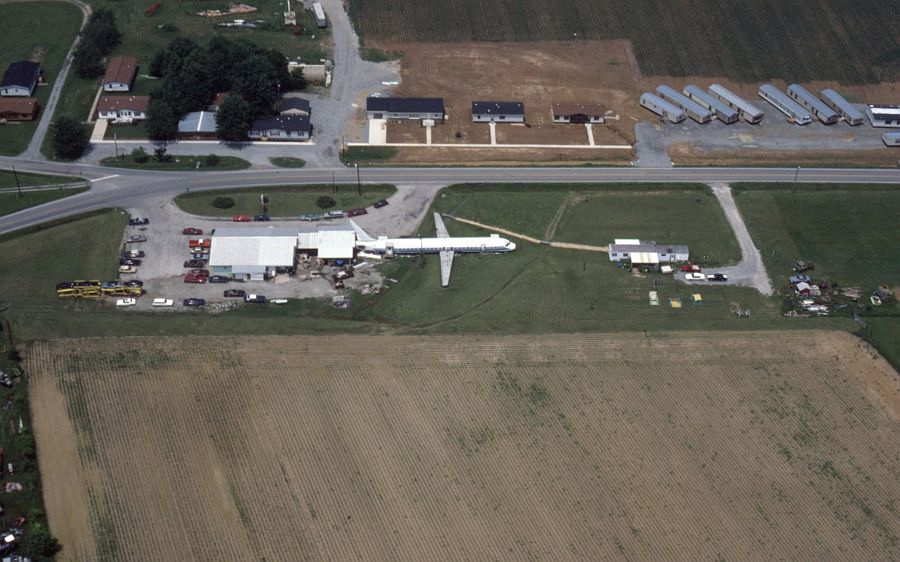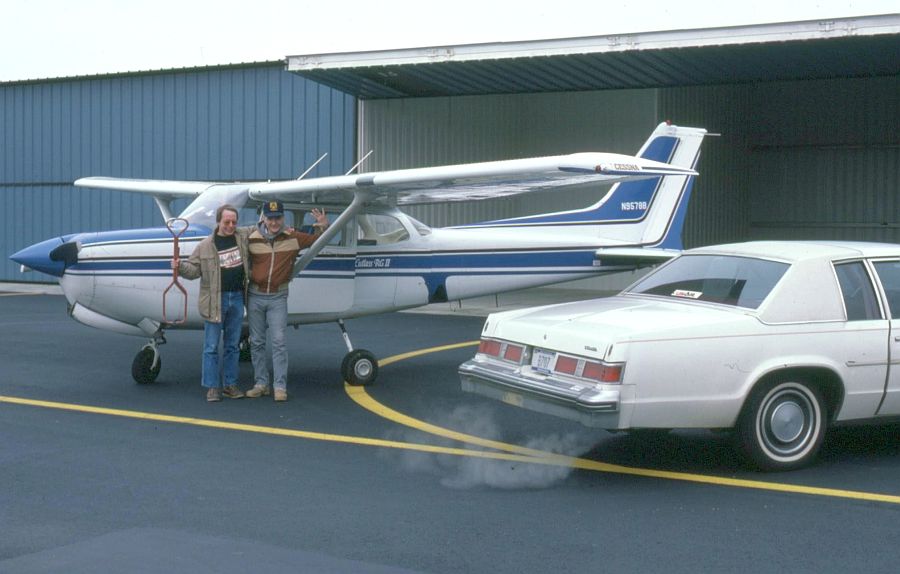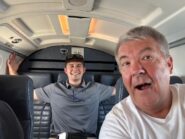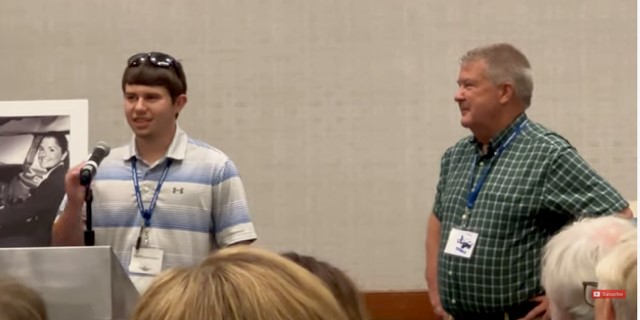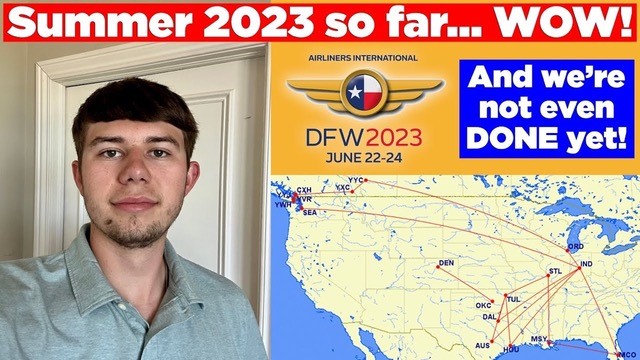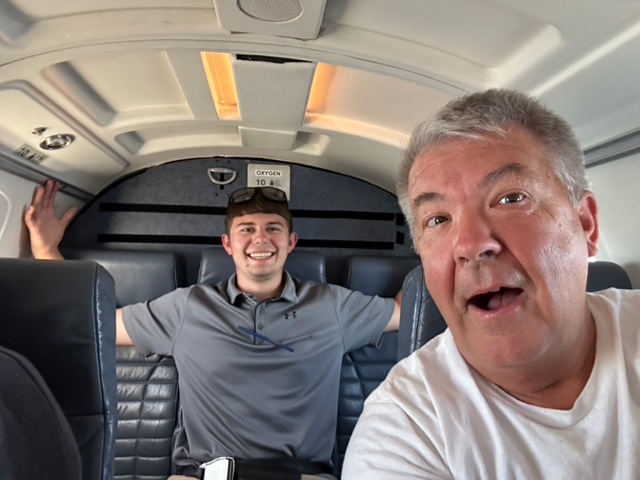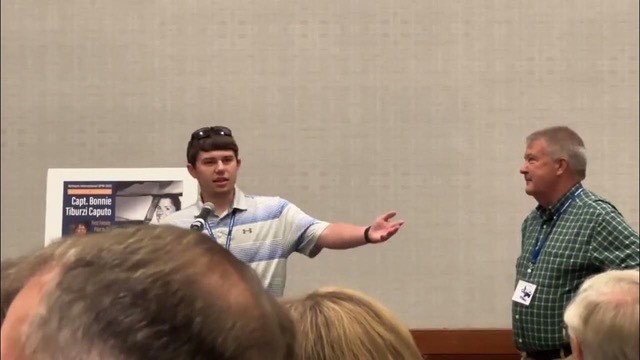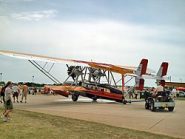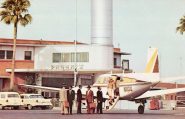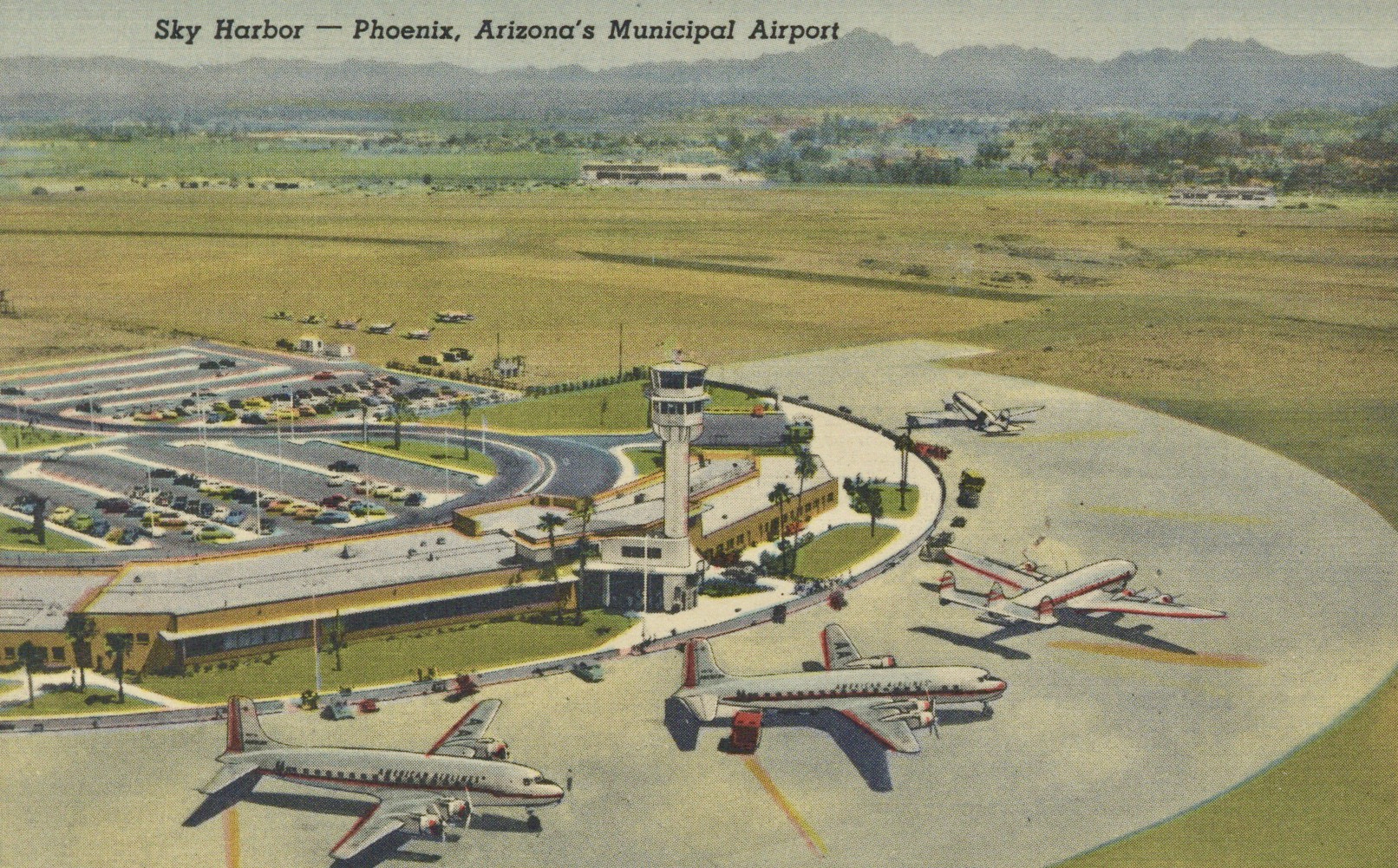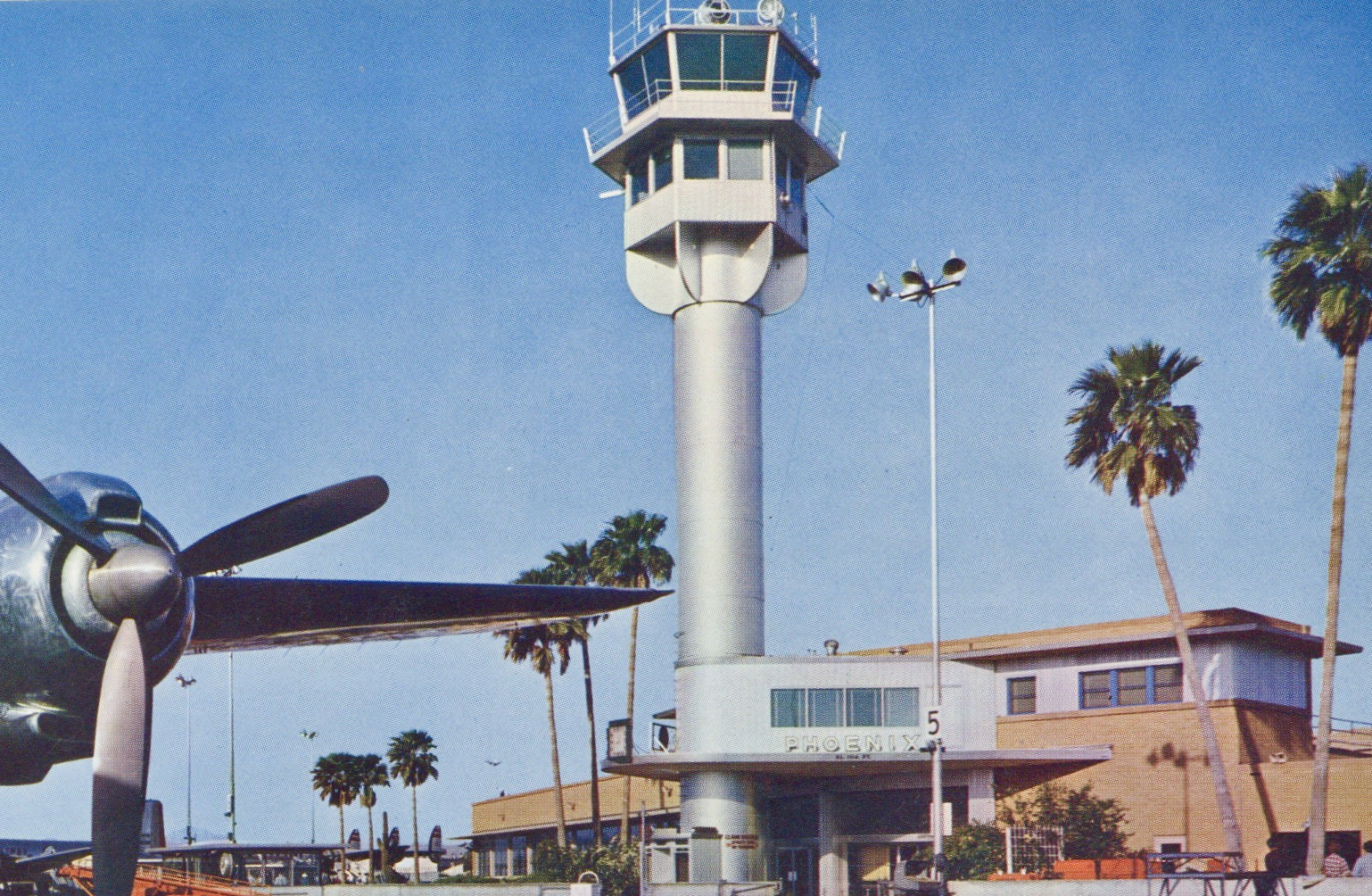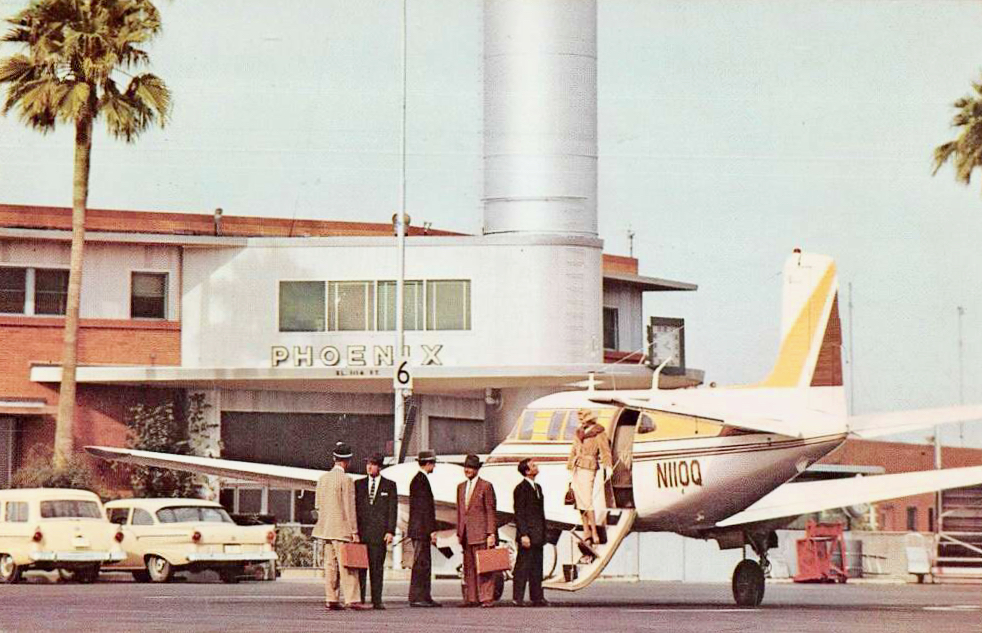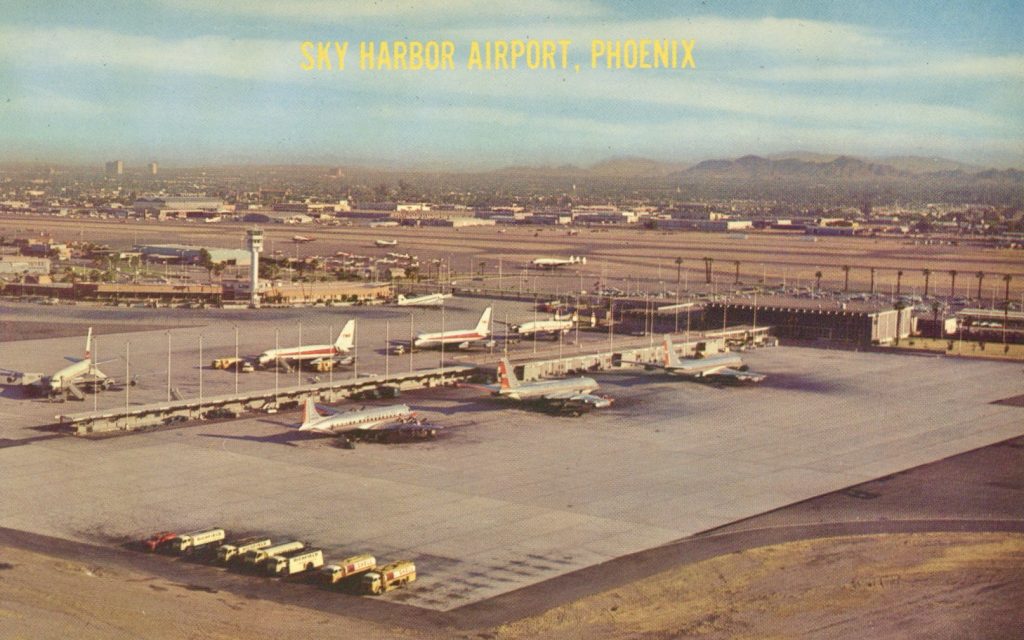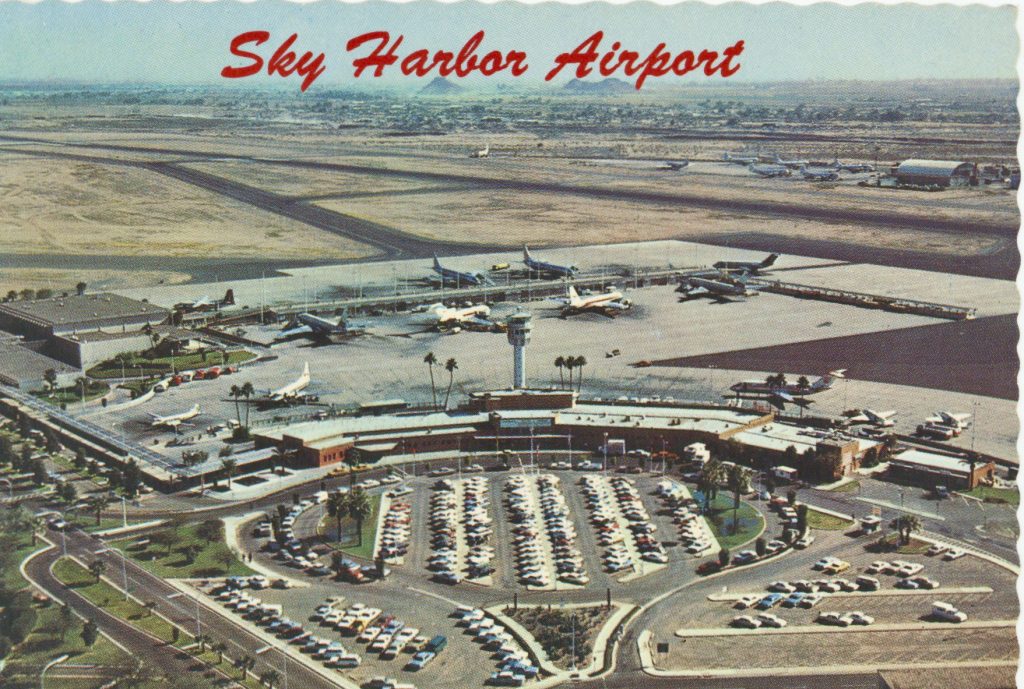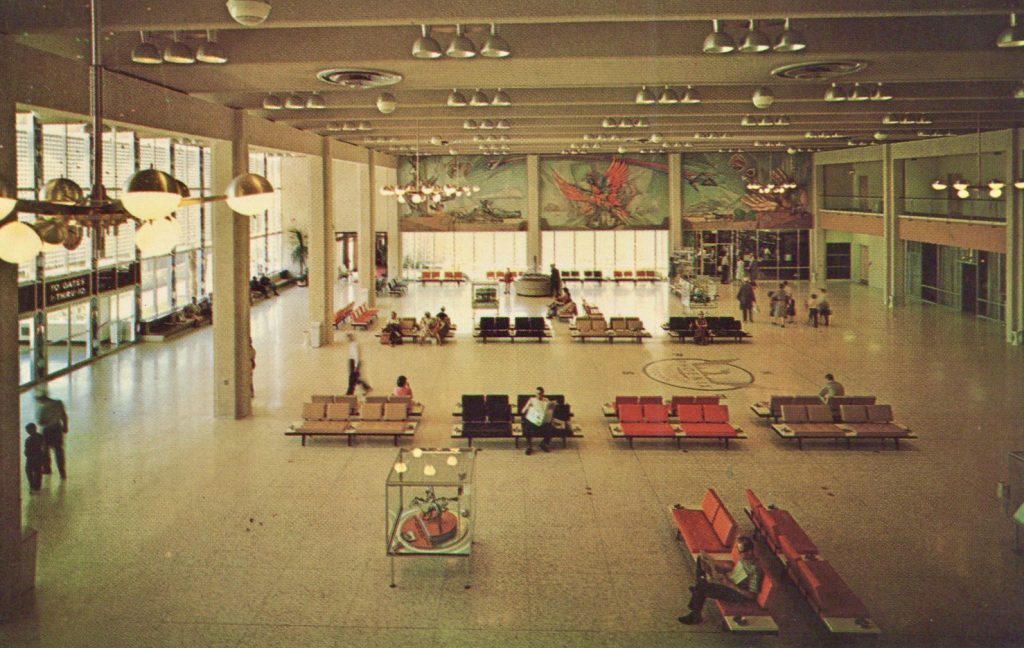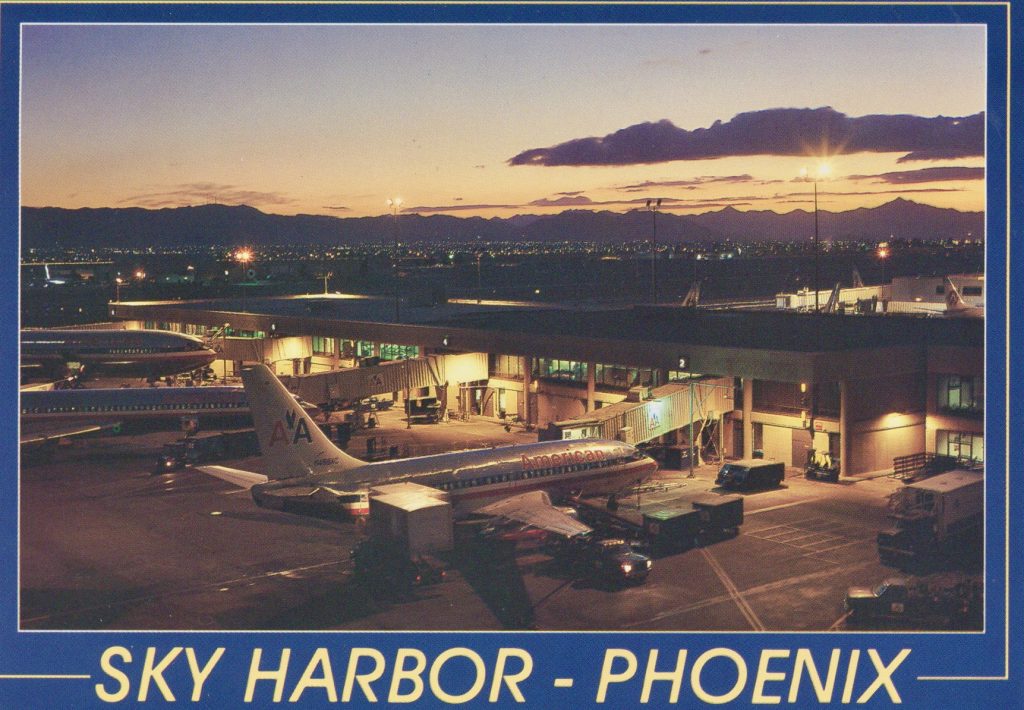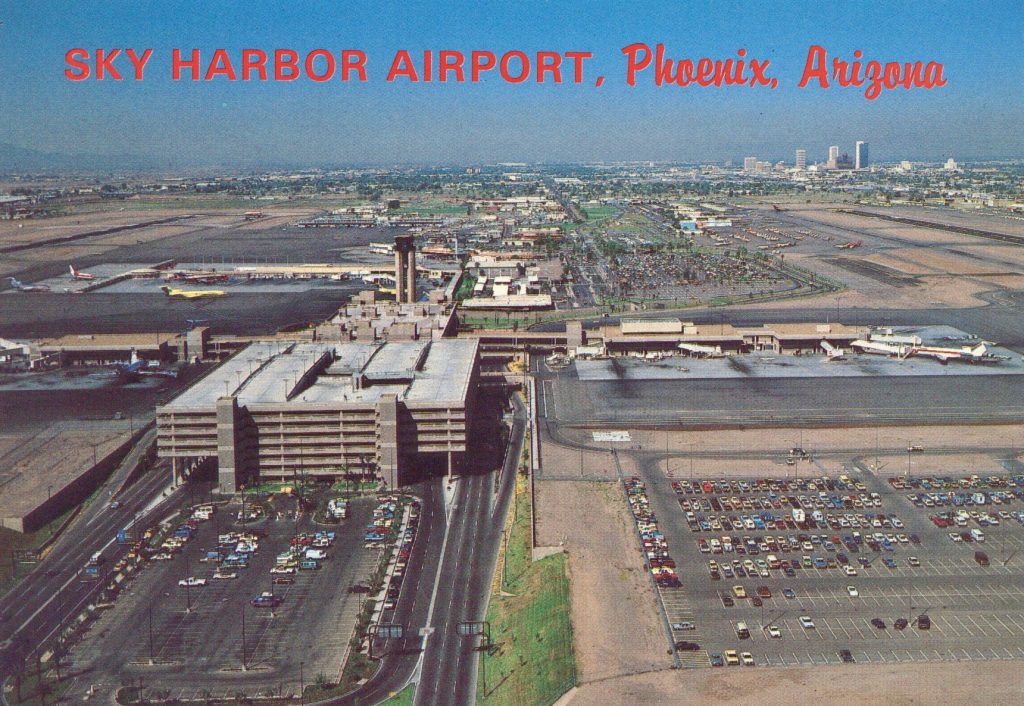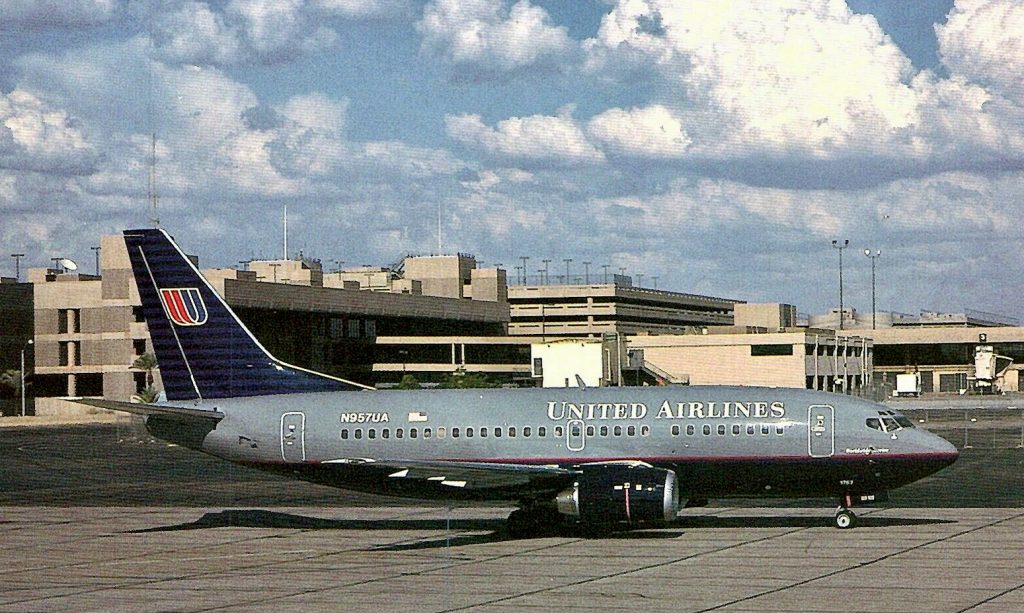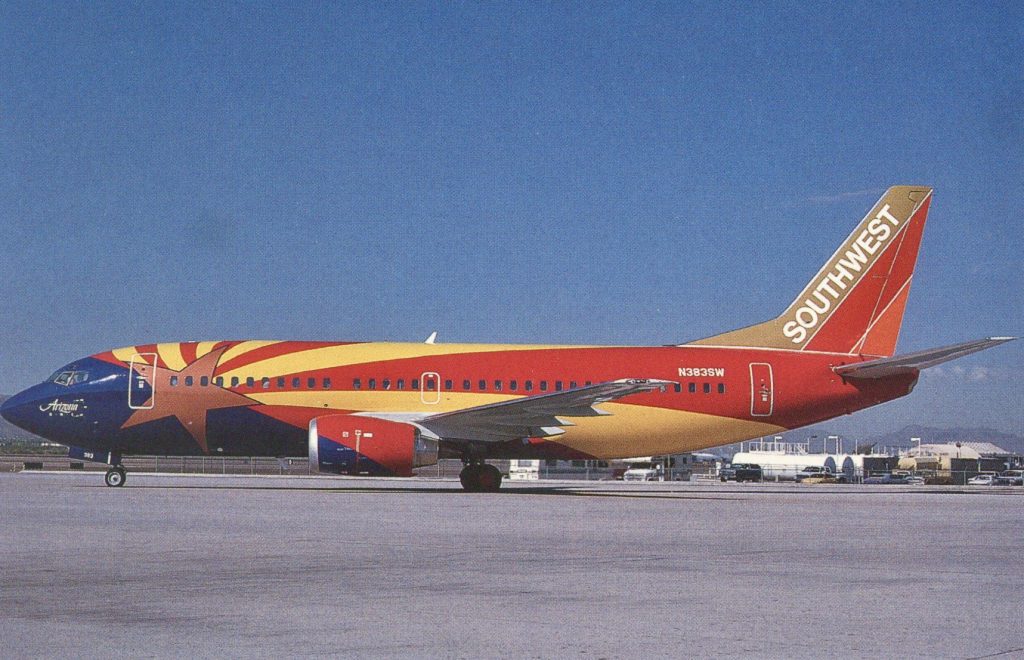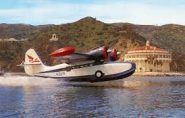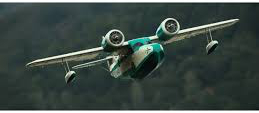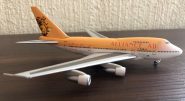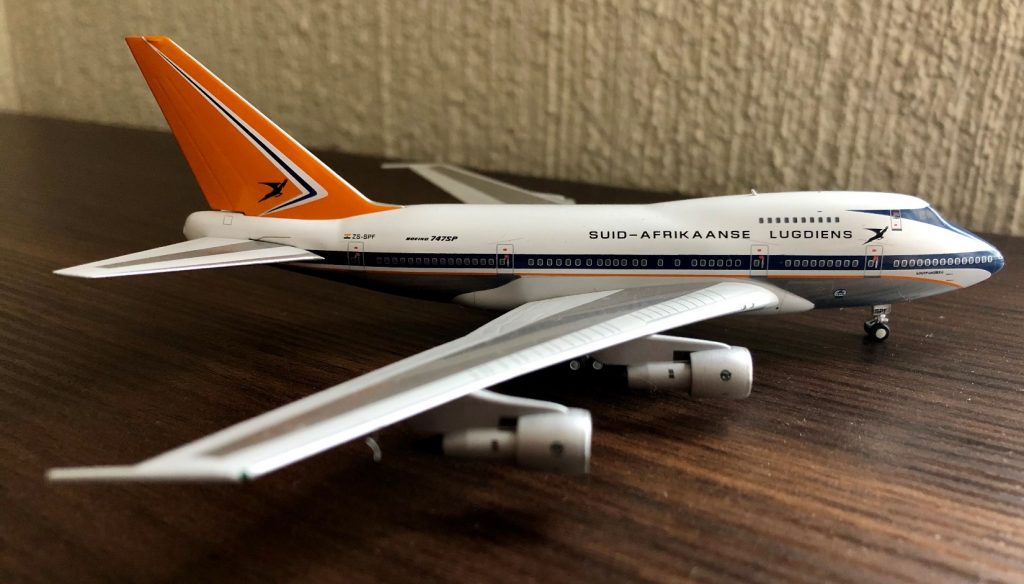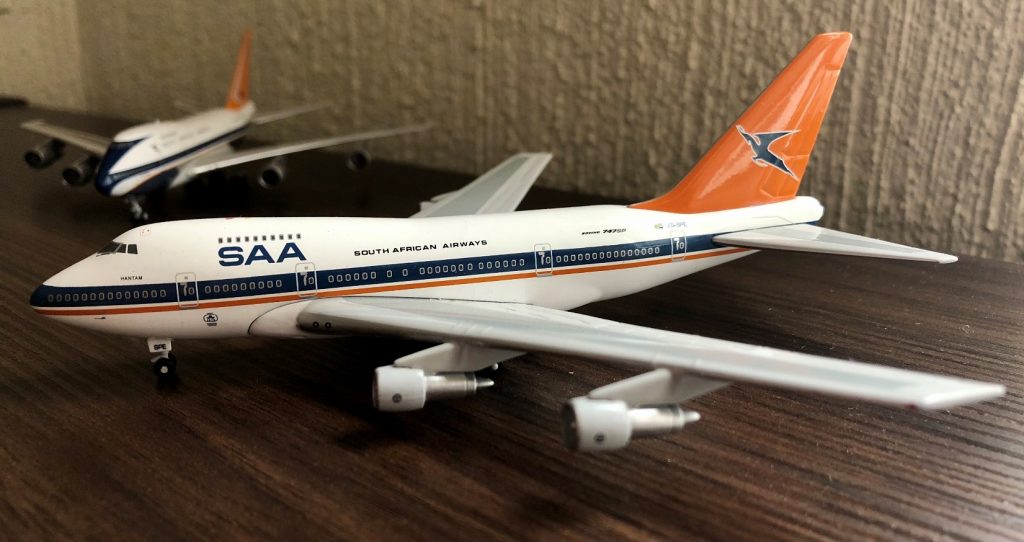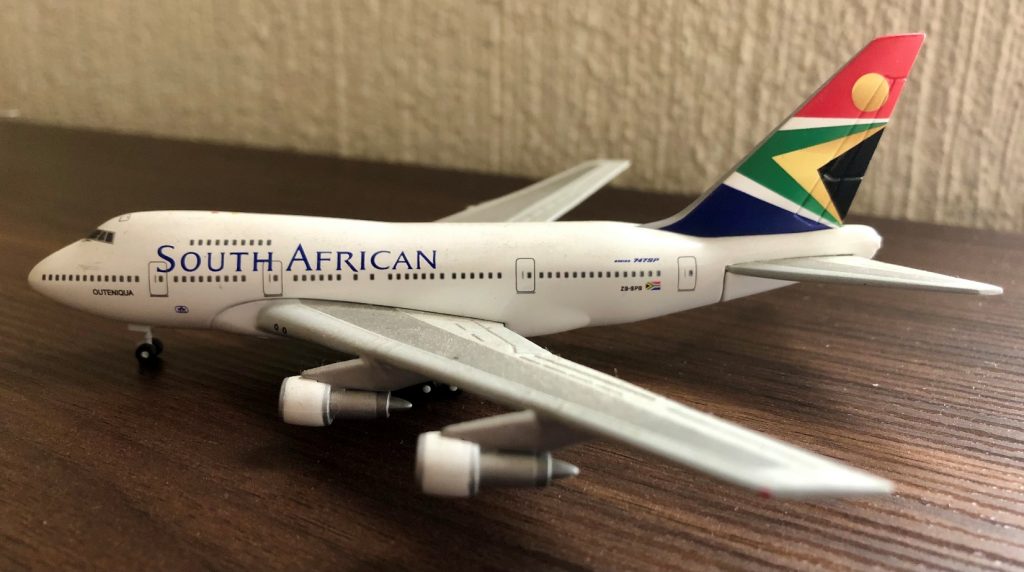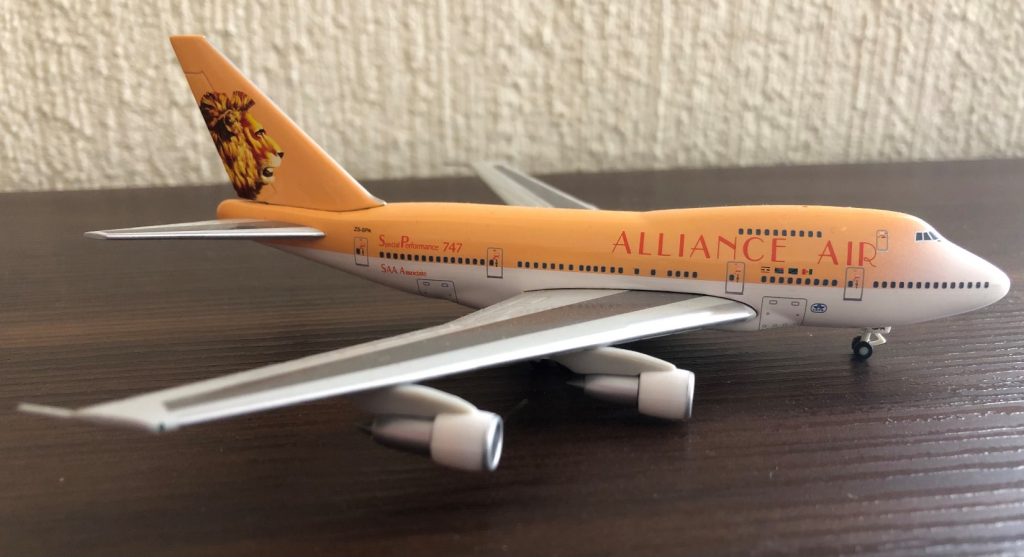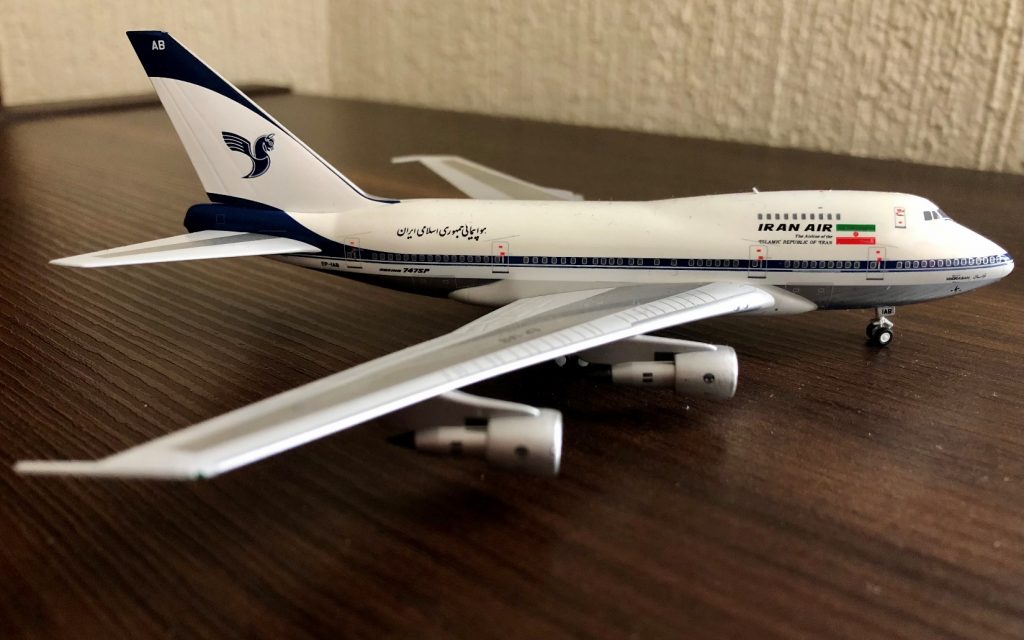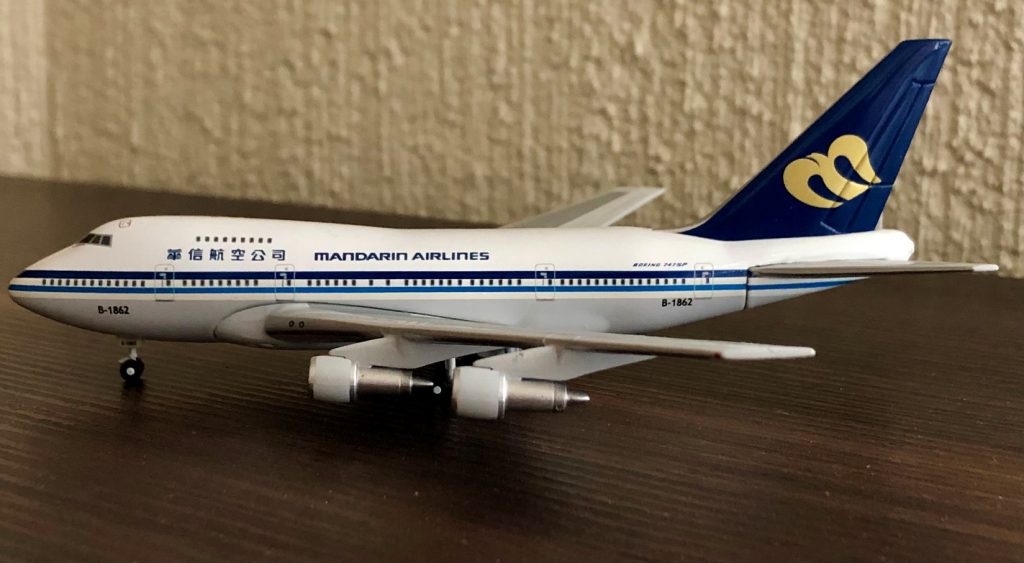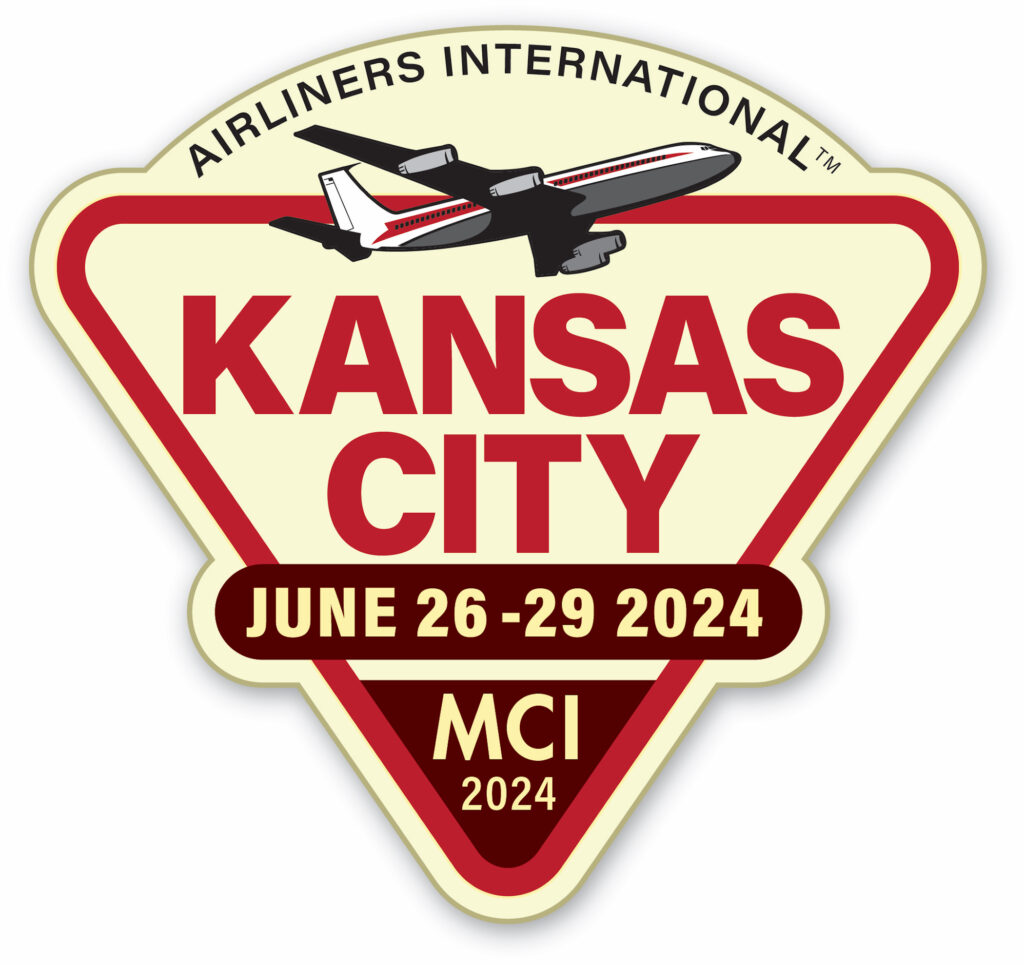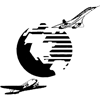AI2024,Airliners International,Kansas City,Kansas City Municipal Airport,KCI,MKC,New Kansas City Terminal
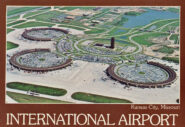
KANSAS CITY AIRPORTS ON POSTCARDS
By Marvin G. Goldman
The first airport in the Kansas City, MO metropolitan area was Richards Field which opened in 1922 at the border between Kansas City and Raytown, MO. It had limited commercial airline passenger service and was mainly utilized for air mail and military purposes.
As Richards Field proved inadequate for expanding commercial airline passenger operations, Kansas City built in 1927 a new airport in a sharp bend along the Missouri River close to downtown. Initially called “New Richards Airport,” its name soon became “Kansas City Municipal Airport” and was sometimes referred to as the “Downtown Airport.” The new airport received airport code “MKC,” presumably taken from “Municipal Kansas City.” A modern passenger terminal opened at this new airport in December
1929.
Another airport, called Fairfax Airport, was also established in the 1920s, located across the river from the Kansas City Municipal Airport. Some commercial airline flights operated from Fairfax in the late 1920s and into the 1930s, but it was mainly used for industrial purposes.
Kansas City Municipal Airport (MKC)
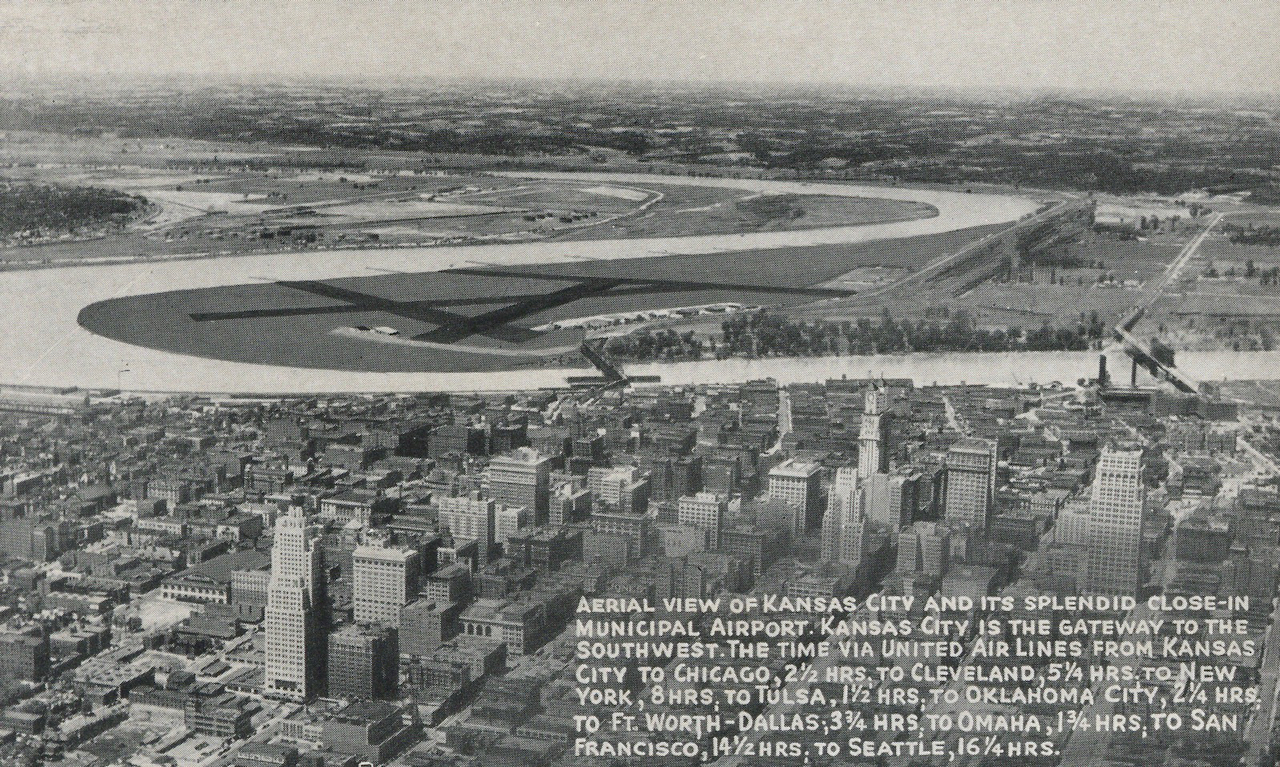
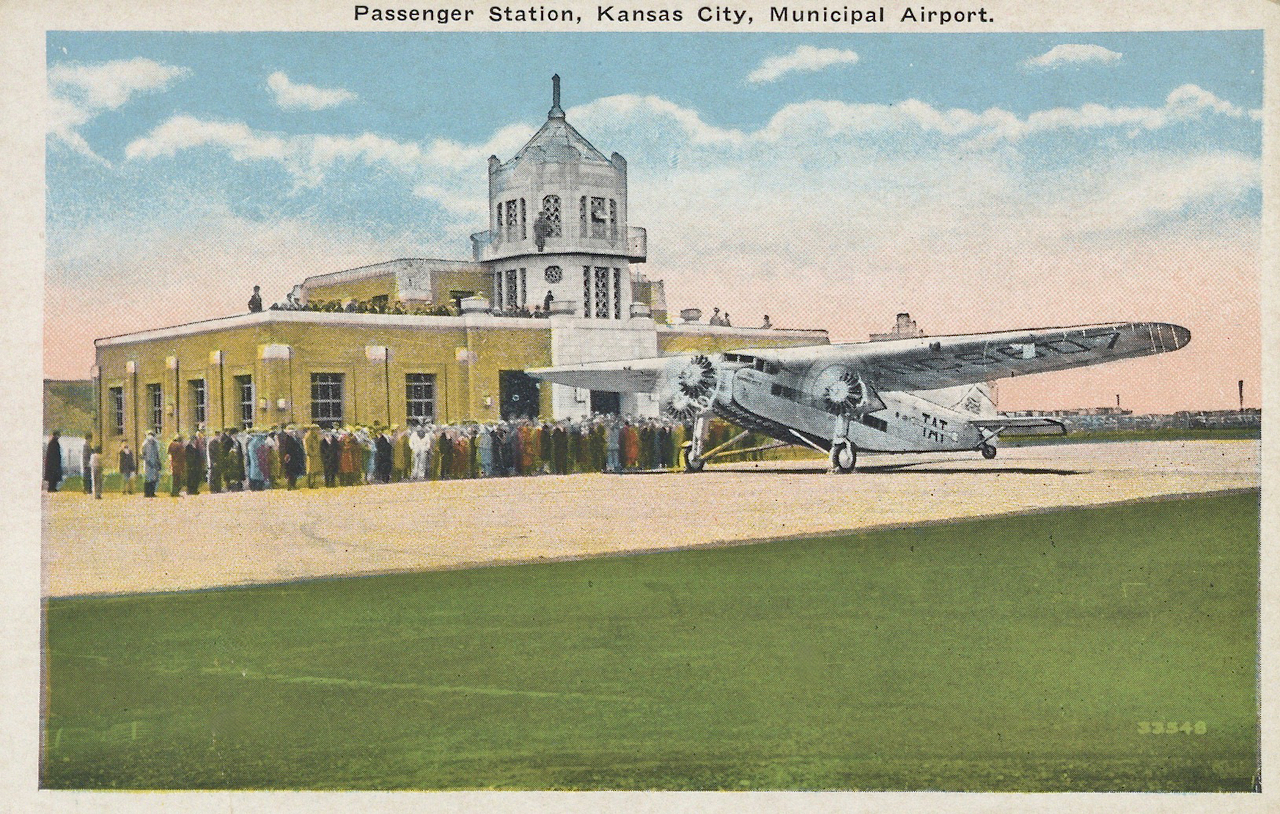
Publisher (‘Pub’r’) Max Bernstein, no. 33548.
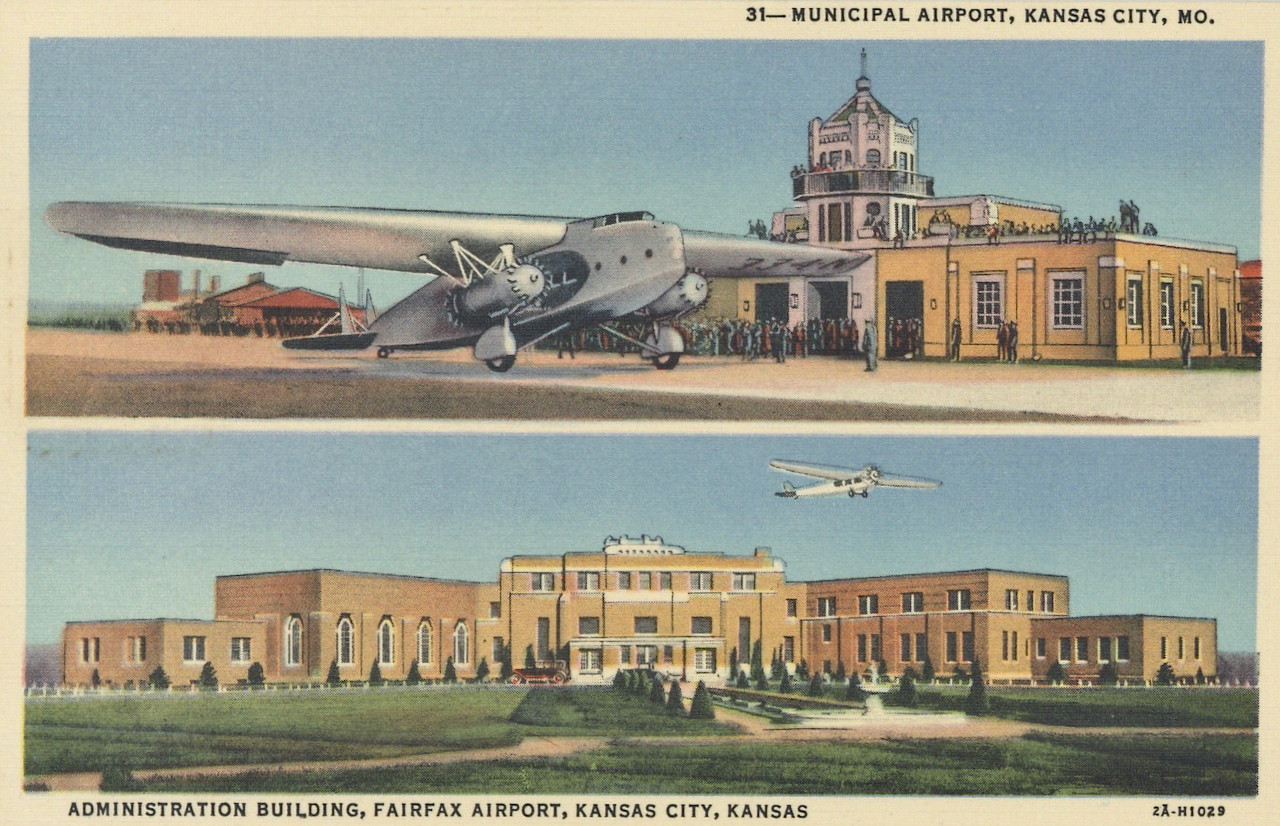
Lower view: Administration building at Fairfax Airport across the river from MKC.
Linen finish card.
Pub’r Max Bernstein, Curteich no. 2A-H1029, 1932.
In October 1930 Transcontinental Air Transport, Western Air Express, and three other airlines merged to form Transcontinental and Western Air, later named TWA (Trans World Airlines). TWA established its headquarters in Kansas City and became the most prominent airline at MKC. It also established its maintenance and overhaul base nearby across the river at Fairfax Airport.
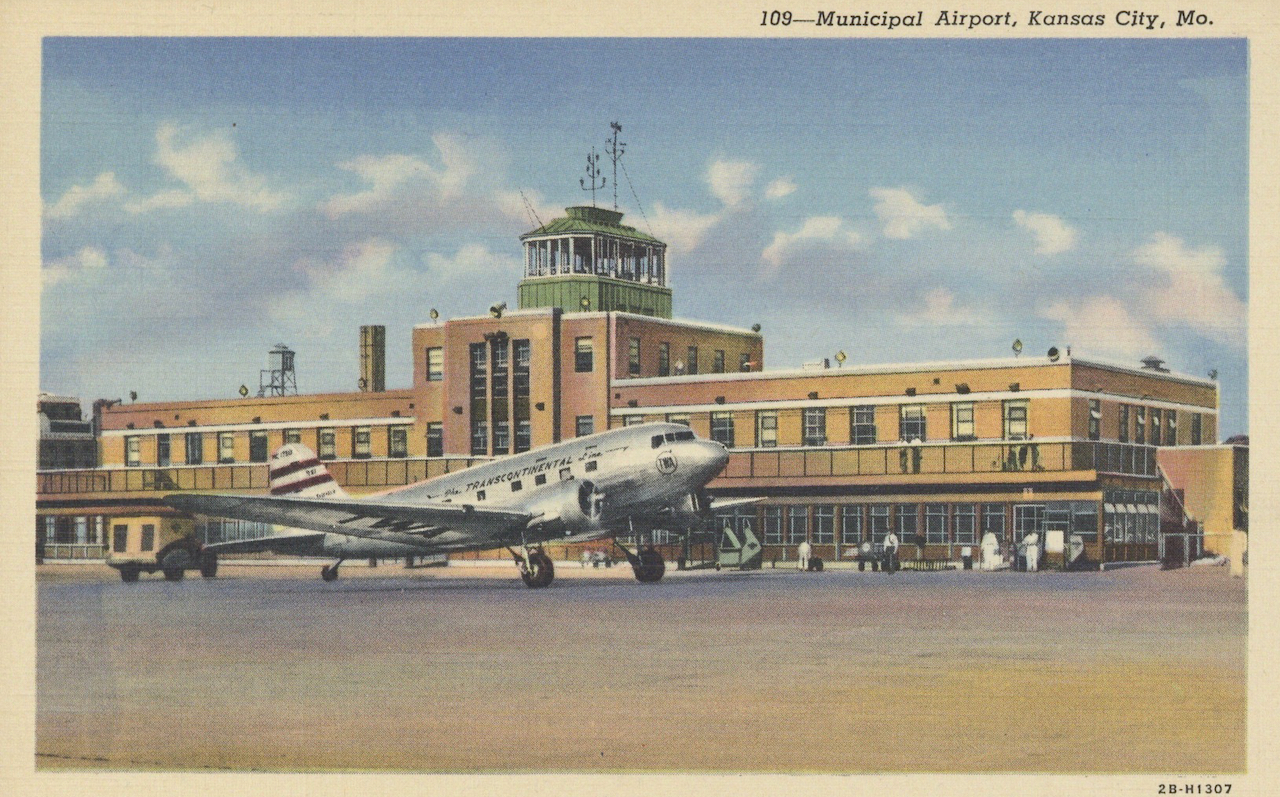
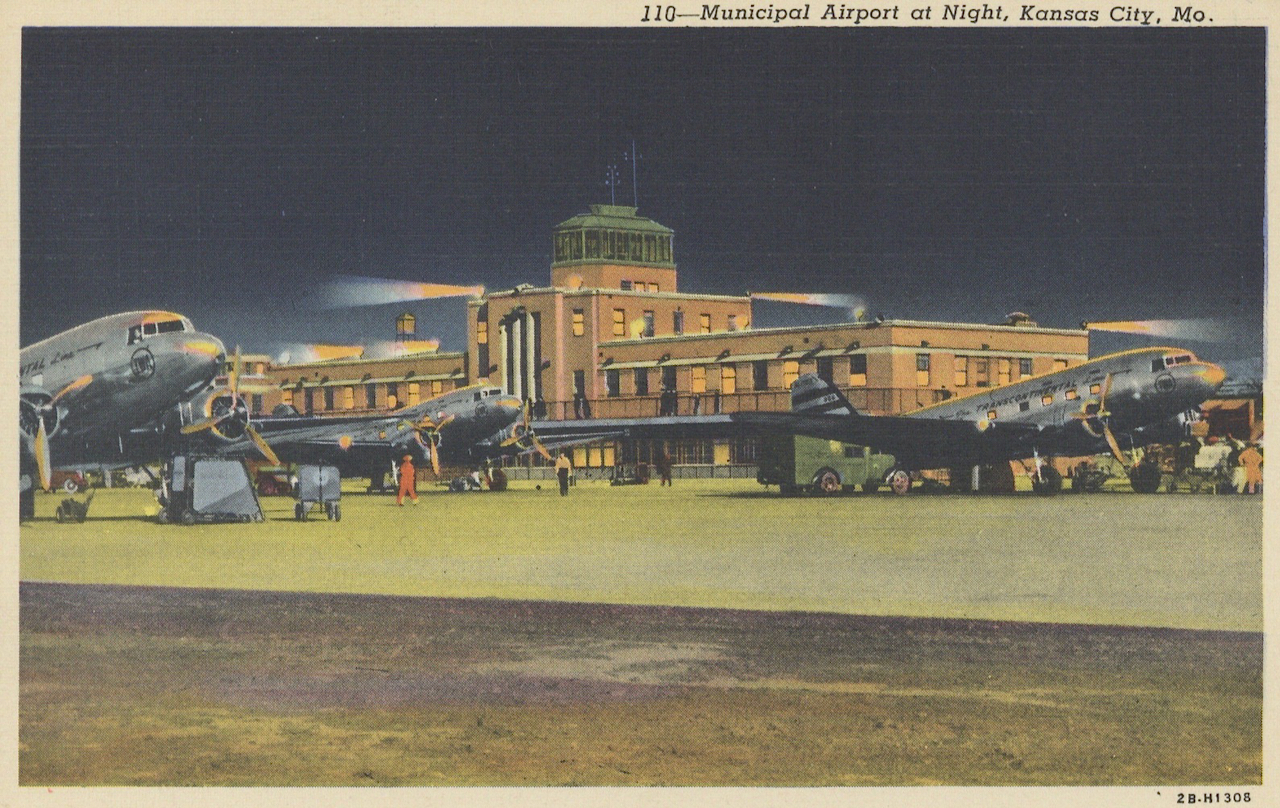
The next most prominent airline at MKC after TWA was Mid-Continent Airlines, originally formed under the name Hanford Airlines in 1936. In 1938 the airline changed its name to Mid-Continent and moved its company headquarters to Kansas City’s Fairfax Airport. Mid-Continent merged into Braniff International Airways in 1952.
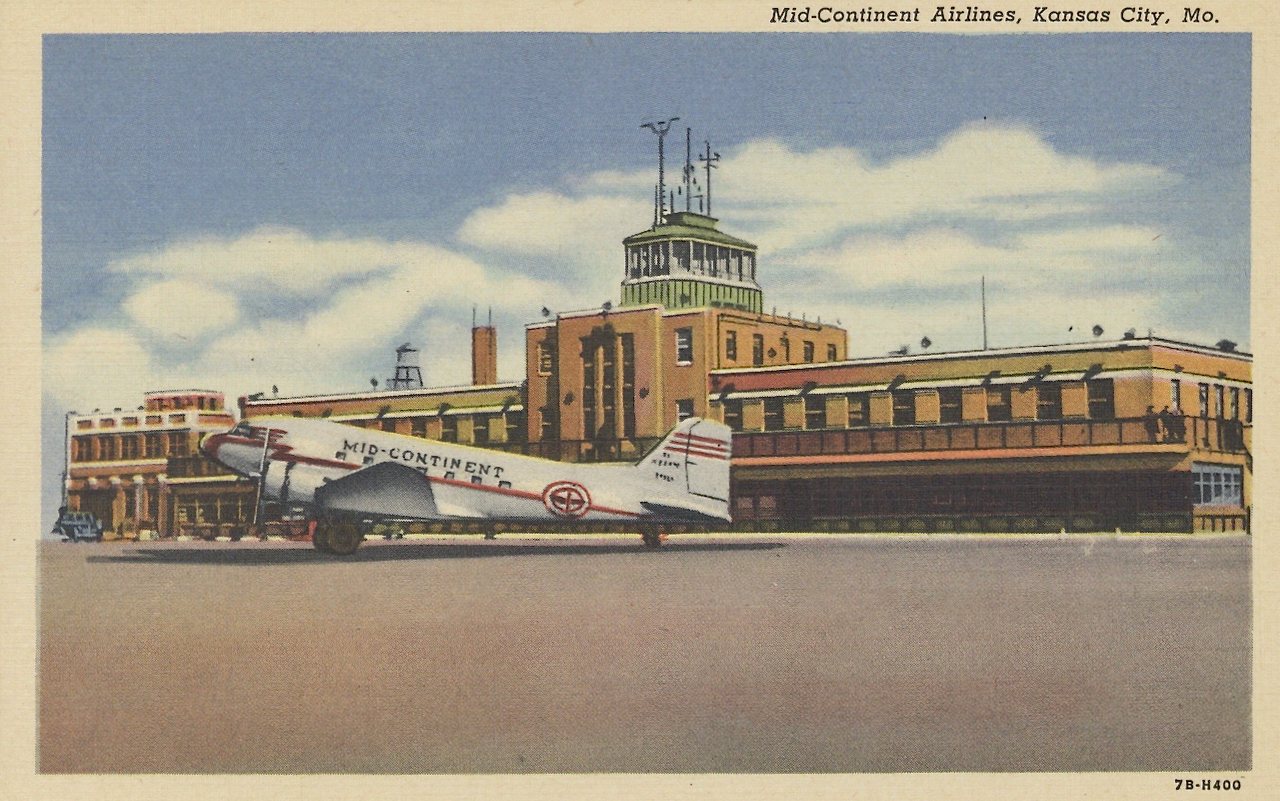
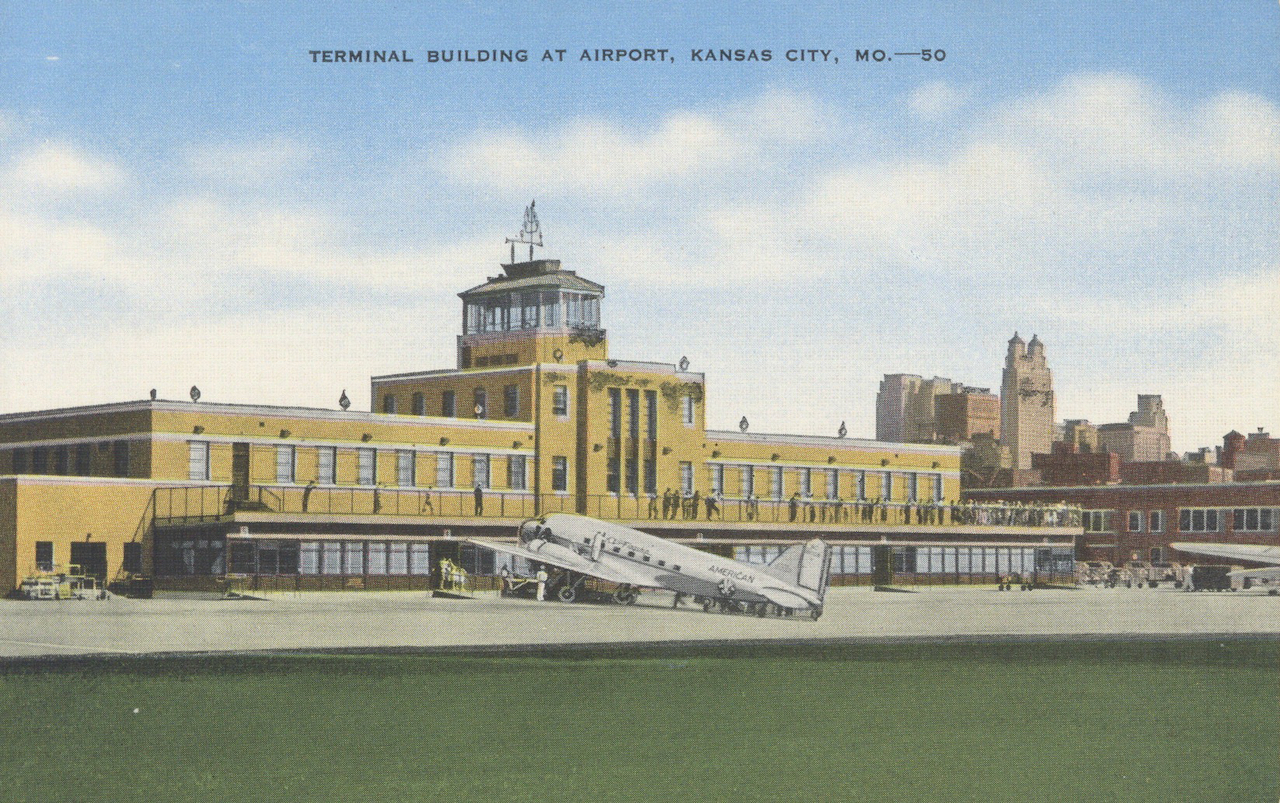
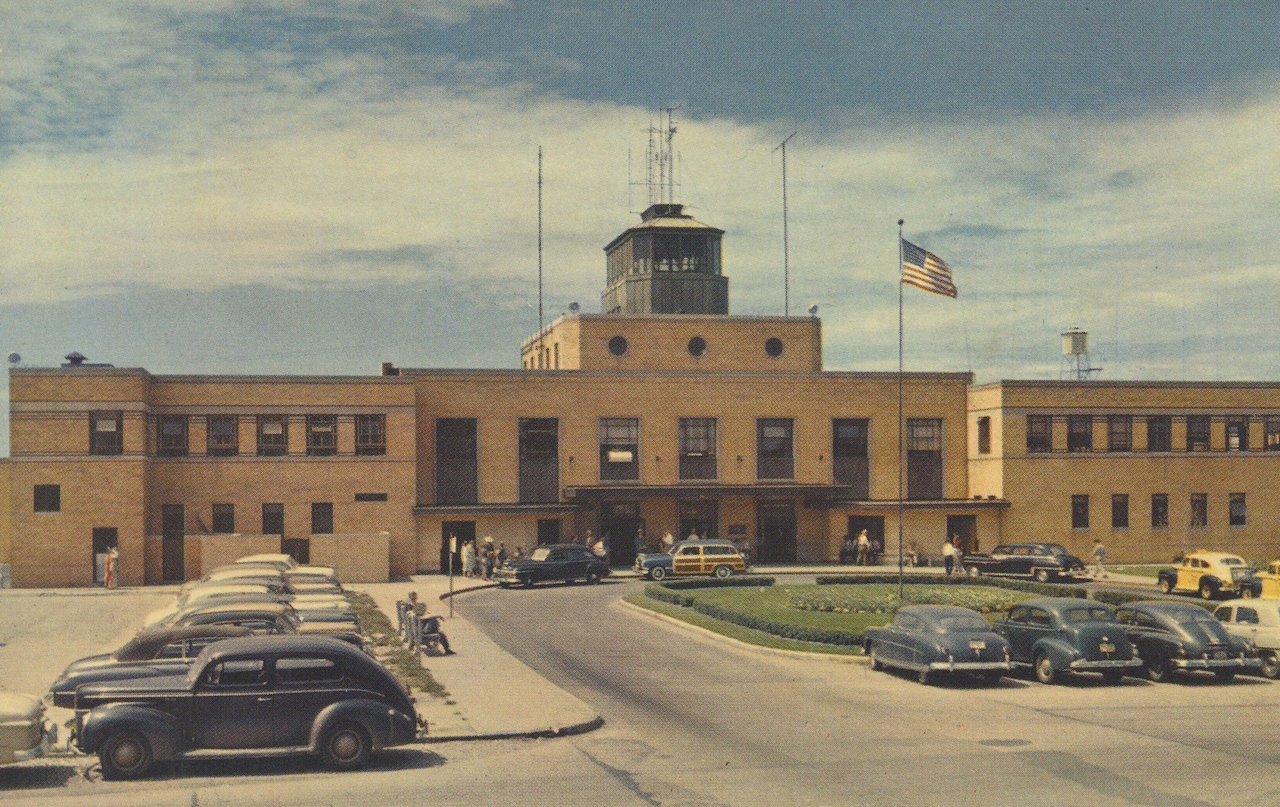
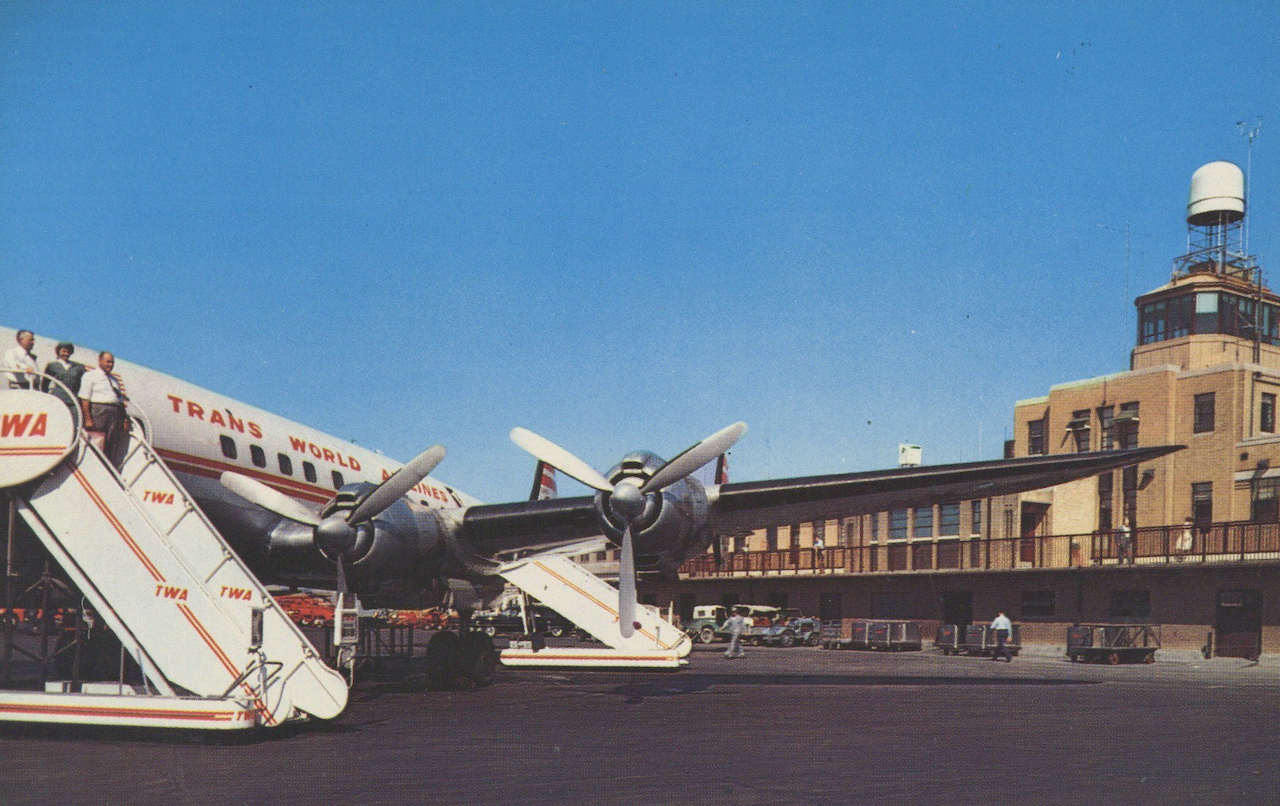
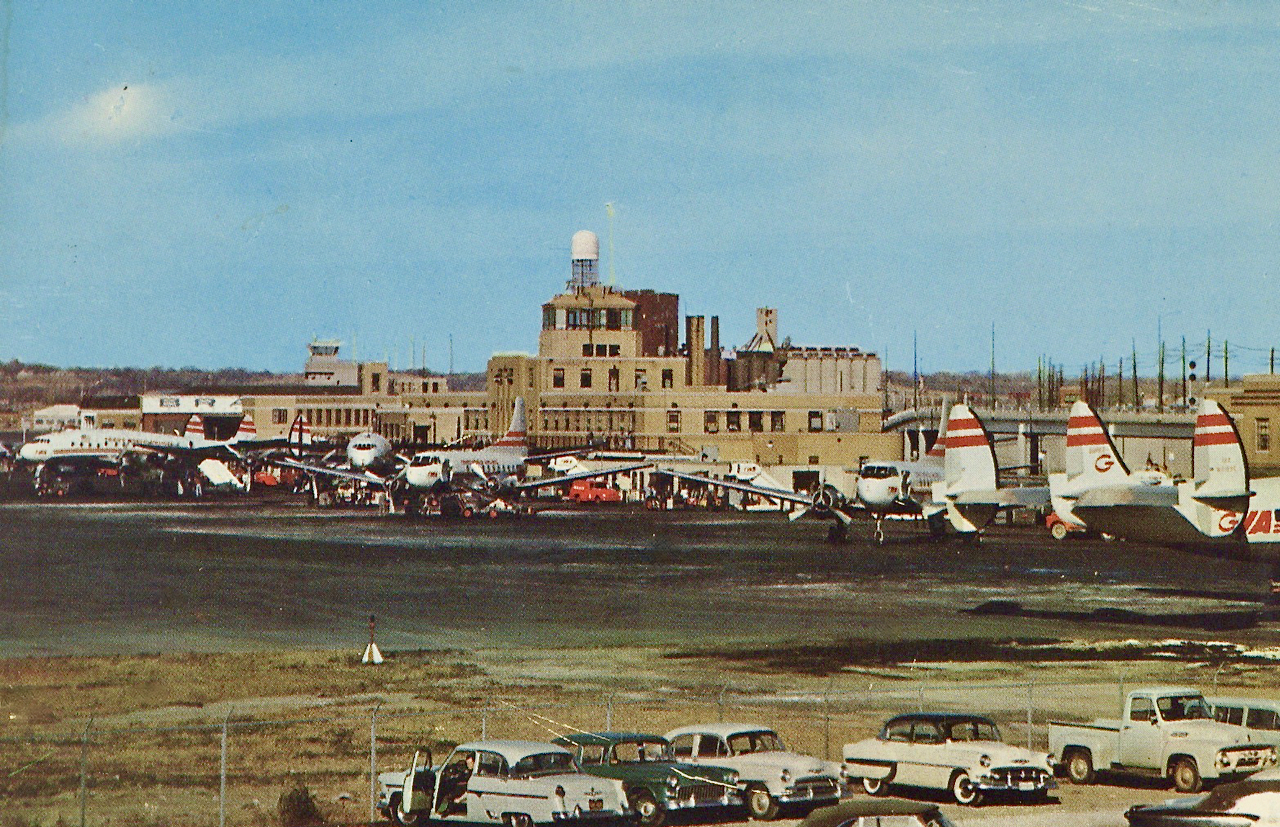
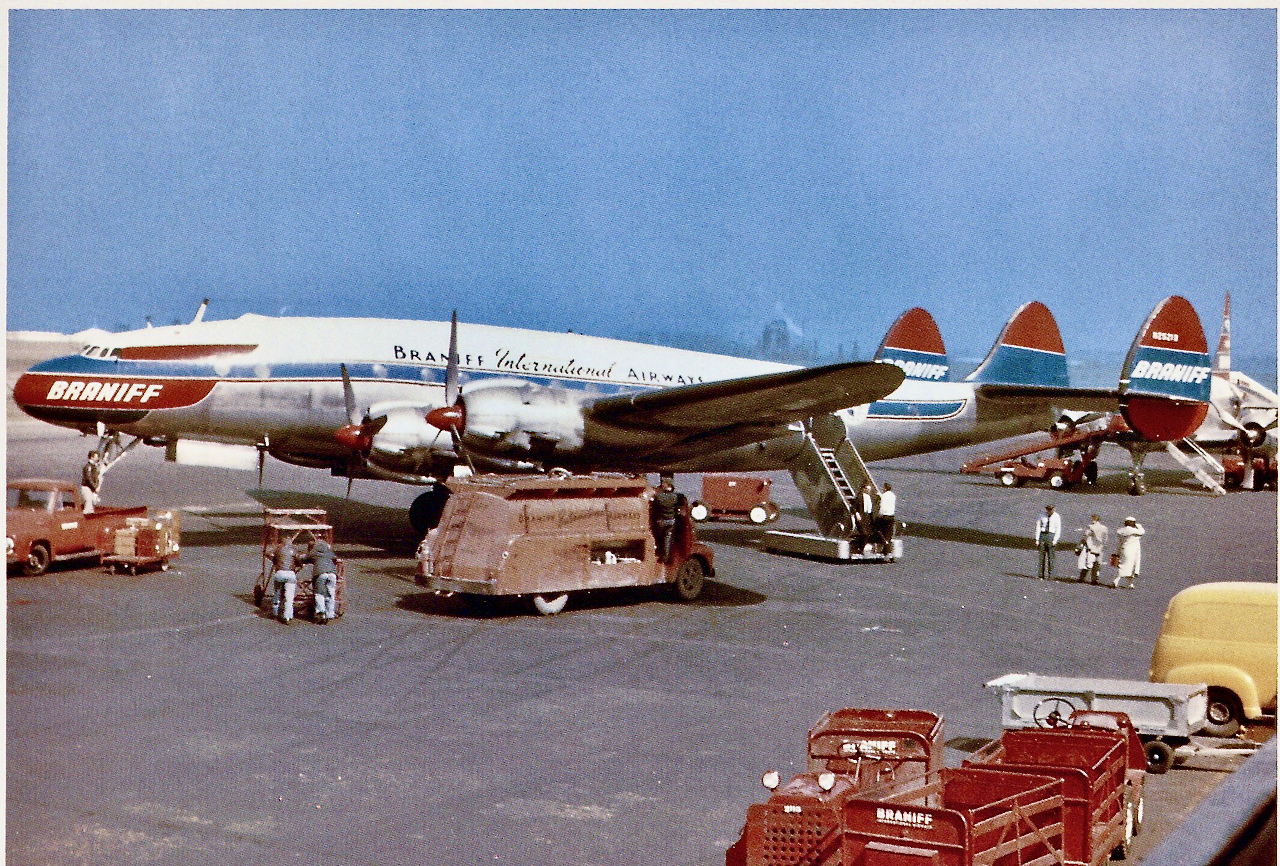
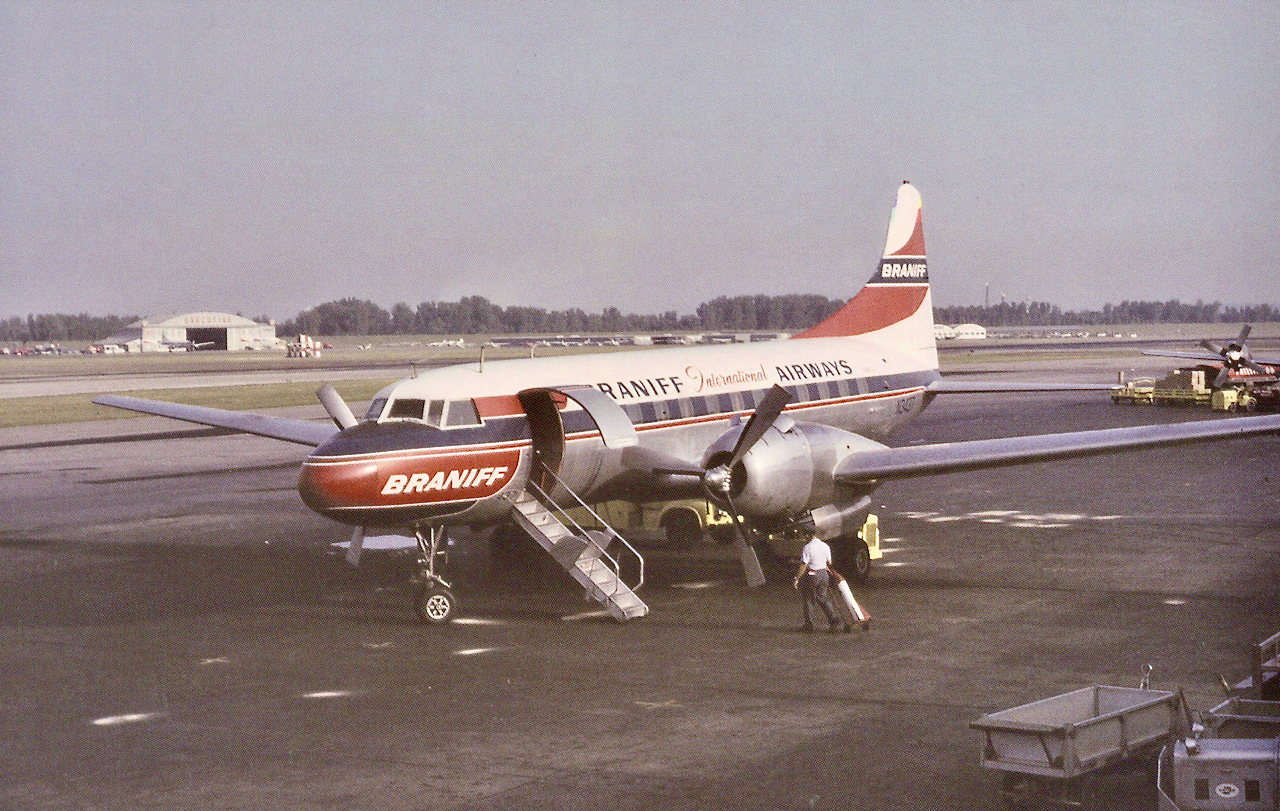
Pub’r j j Postcards for Airliners International 2007 MCI, no. 1; Bob Woodling photo.
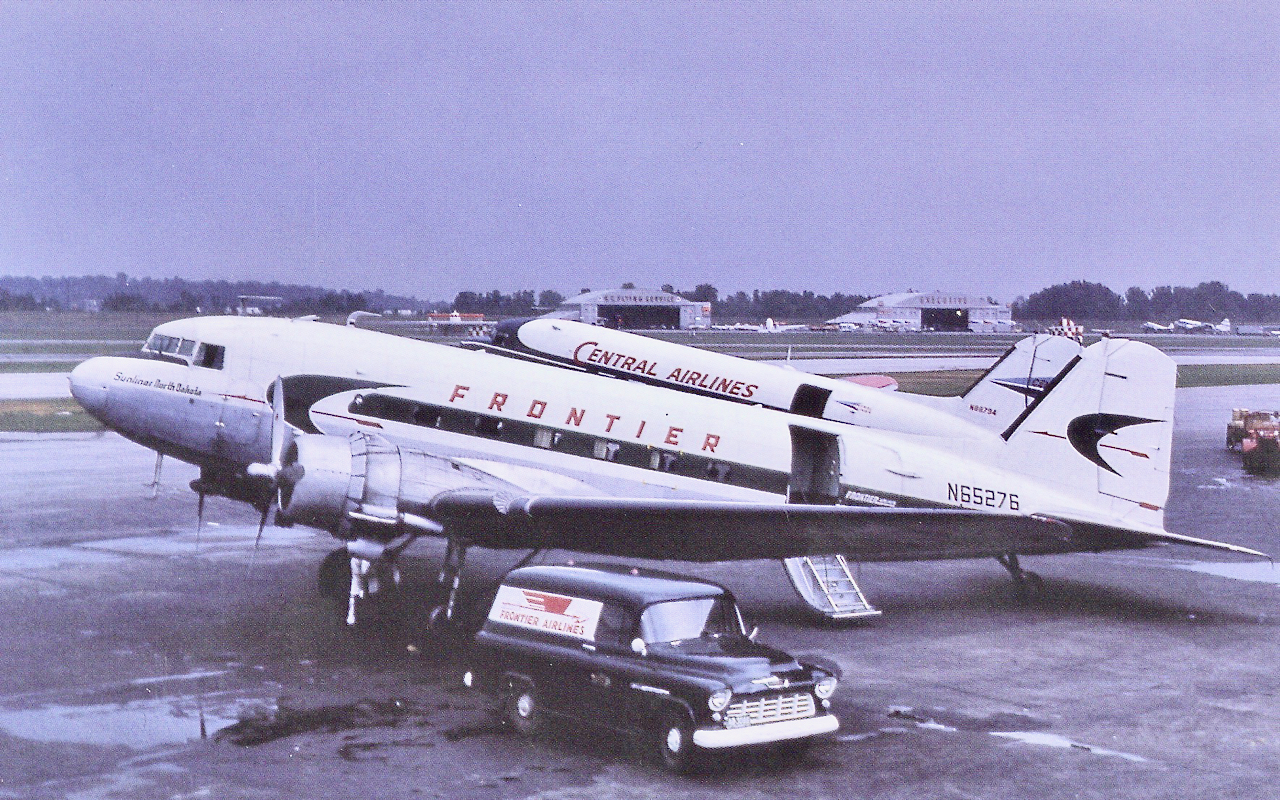
The original Frontier Airlines and Central served Kansas City for many years. Frontier purchased Central in 1967 and ceased operations in 1986.
A new airline using the same “Frontier Airlines” name was founded in 1994.
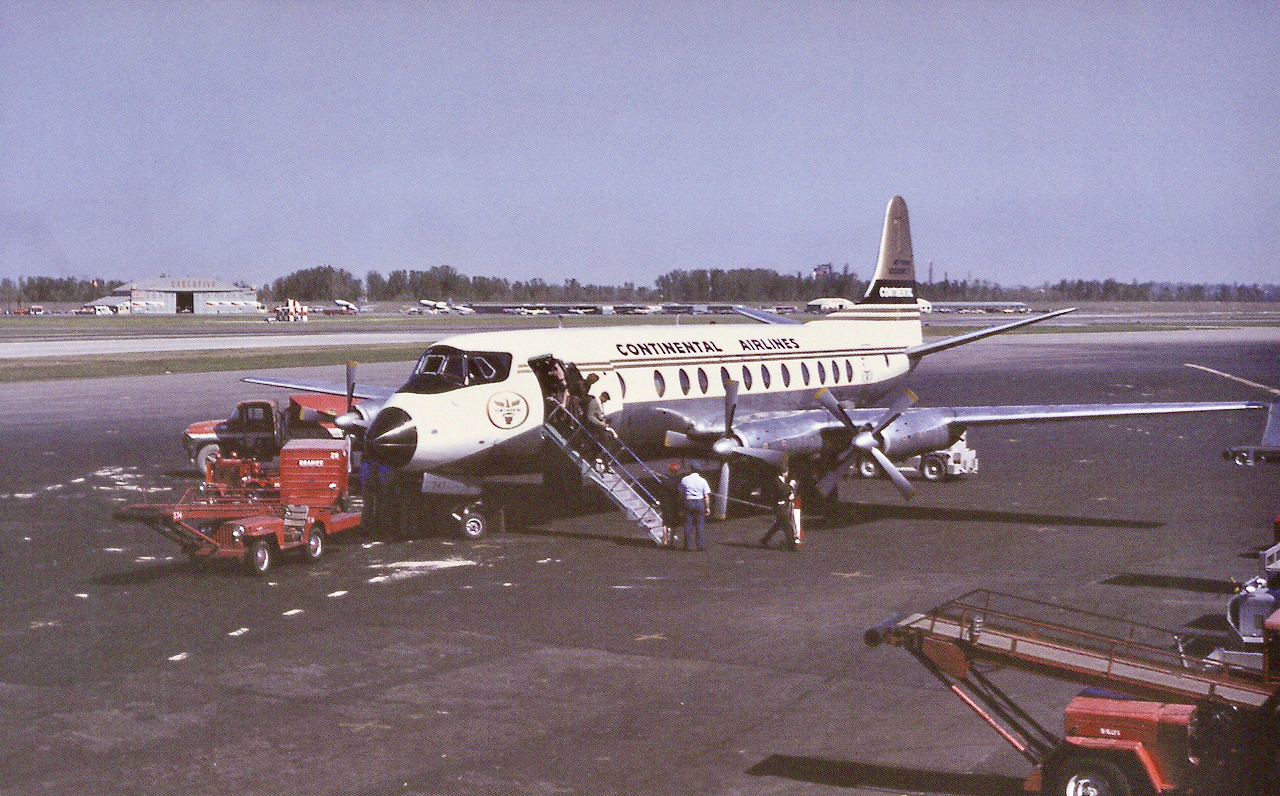
Pub’r j j Postcards for Airliners International 2007 MCI, no. 2; Bob Woodling photo.
Continental operated from 1934 to 2012 when it merged into United Airlines.
Its first regularly scheduled service to Kansas City was in 1946.
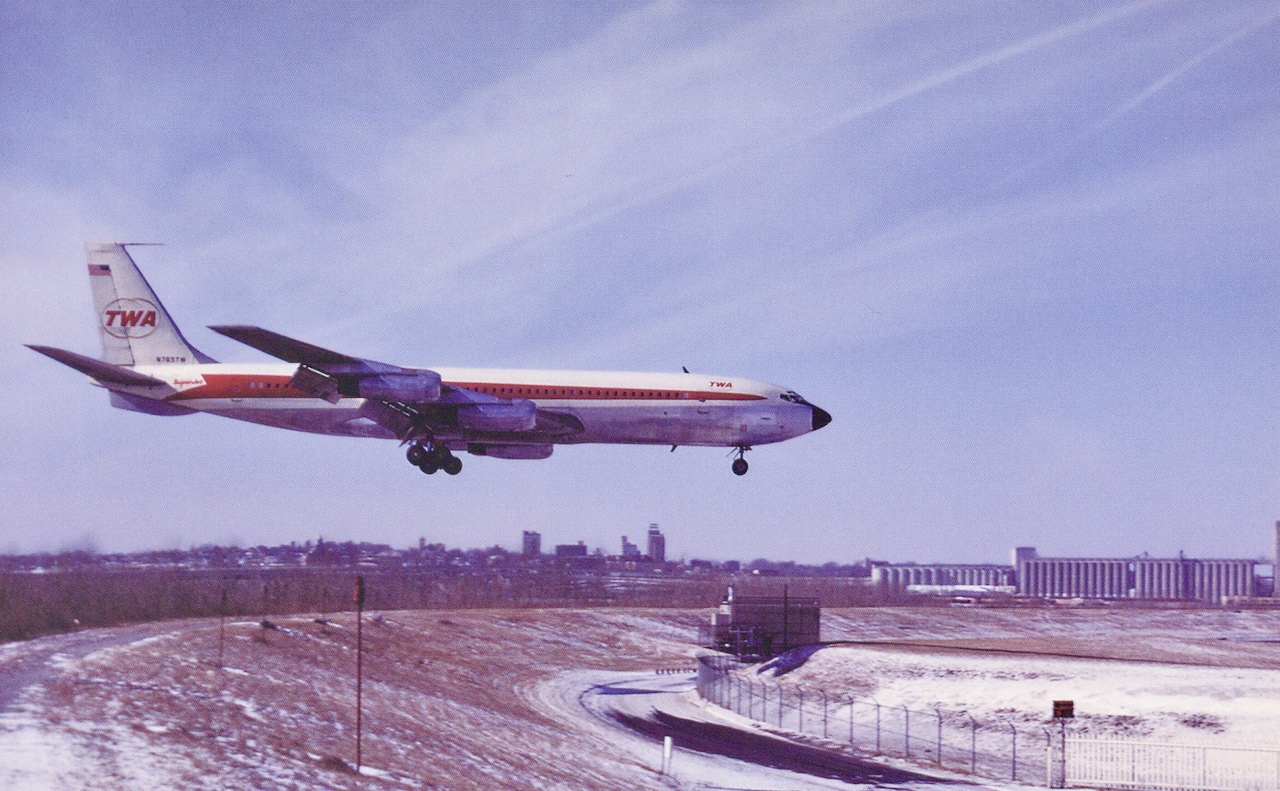
Pub’r j j Postcards for Airliners International 2007 MCI, no. 7; Bob Woodling photo.
TWA eventually was acquired by American Airlines in 2012.
The Original “MCI” – Mid-Continent International Airport
In 1951 Kansas City suffered a great flood that severely damaged TWA’s maintenance and overhaul base and many other facilities at Fairfax Airport across the Missouri River from the downtown Kansas City Municipal Airport (MKC). Some facilities at MKC were also damaged. Moreover, the Kansas City, Missouri Municipality recognized that there was little room for any expansion of airline activity at the two airports. The Municipality started planning a new airport facility 15 miles (24 km.) northwest of downtown Kansas
City in Platte County, MO, away from the Missouri River.
The new airport opened in 1956. It was named Mid-Continent International Airport and received the IATA airport code MCI.
TWA moved its main overhaul base there, and Braniff established a hub at the new airport. However, the runways and terminals at each of MKC and MCI were too small to serve in the future as Kansas City’s main airport.
Most passengers still preferred to travel out of MKC because of its proximity to downtown. However, once jet aircraft started flying in and out of MKC, the jets had difficulty landing on the short runways, and taking off presented challenges because of the downtown skyscrapers. MKC was also congested. A 1963 report by the Federal Aviation Administration (FAA) described MKC as “one of the poorest major airports in the country for large jet aircraft” and asked that no more federal funds be disbursed for it.
The New MCI – Kansas City International Airport
As a result, Kansas City, with the encouragement of TWA, decided to convert the MCI site into a major, modern airport. This new airport, built on the MCI site and named Kansas City International Airport, was dedicated October 23, 1972 and officially opened for commercial service on November 11, 1973. The original IATA airport code MCI was retained for the new airport, so that’s how Kansas City International is MCI (rather than KCI).
After the new MCI opened, all airlines serving Kansas City moved their operations there, and Kansas City Municipal Airport (MKC) was converted to serve only general aviation. In October 1977 the name of Kansas City Municipal Airport was changed to Kansas City Downtown Airport, and the name was changed again in August 2002 to Charles B. Wheeler Downtown Airport (Wheeler was Kansas City’s mayor 1971-
1979).
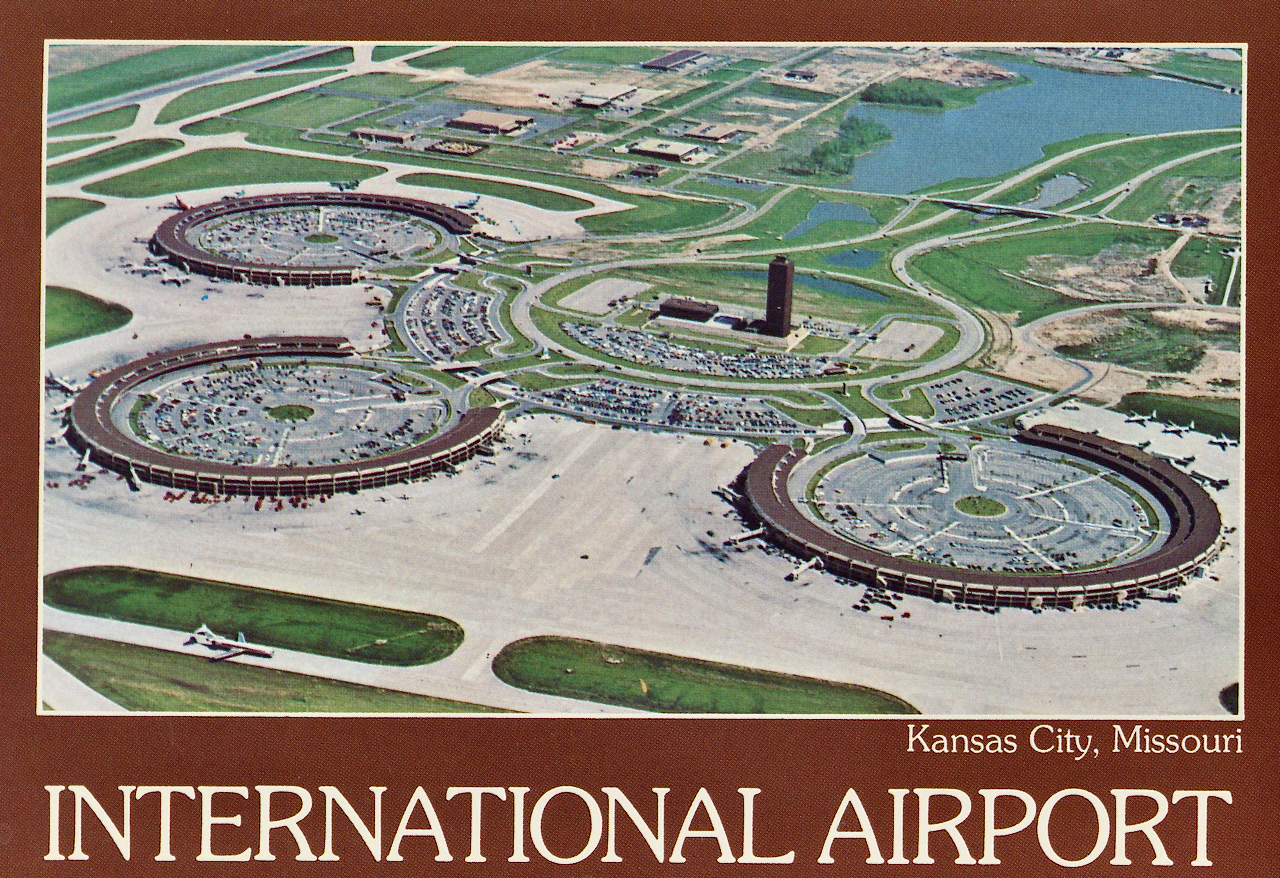
Pub’r Paragon Products, Kansas City, no. 881784; Bob Cunningham photo.
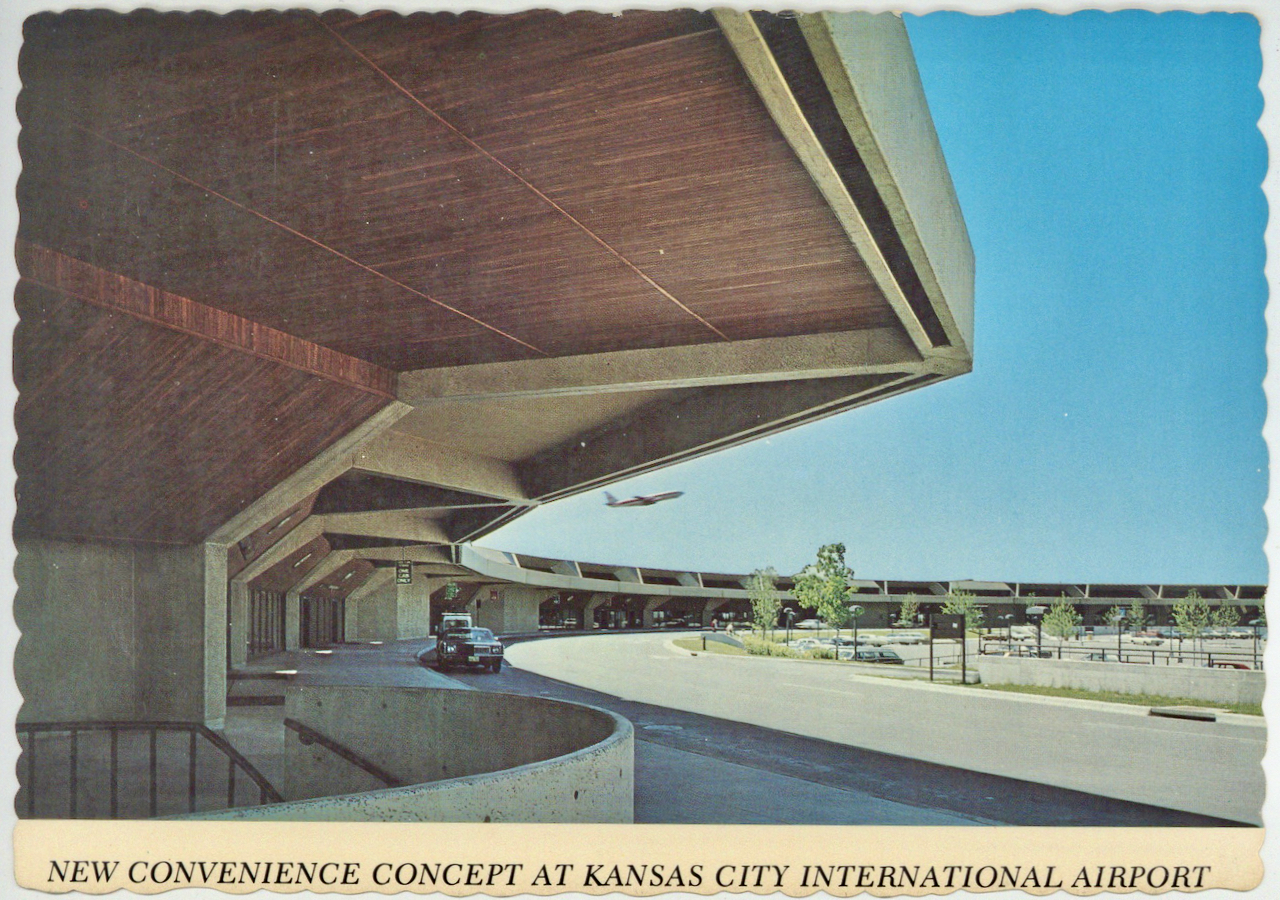
Pub’r J. Tetirick, Kansas City, no. 621143; Bob Cunningham photo.
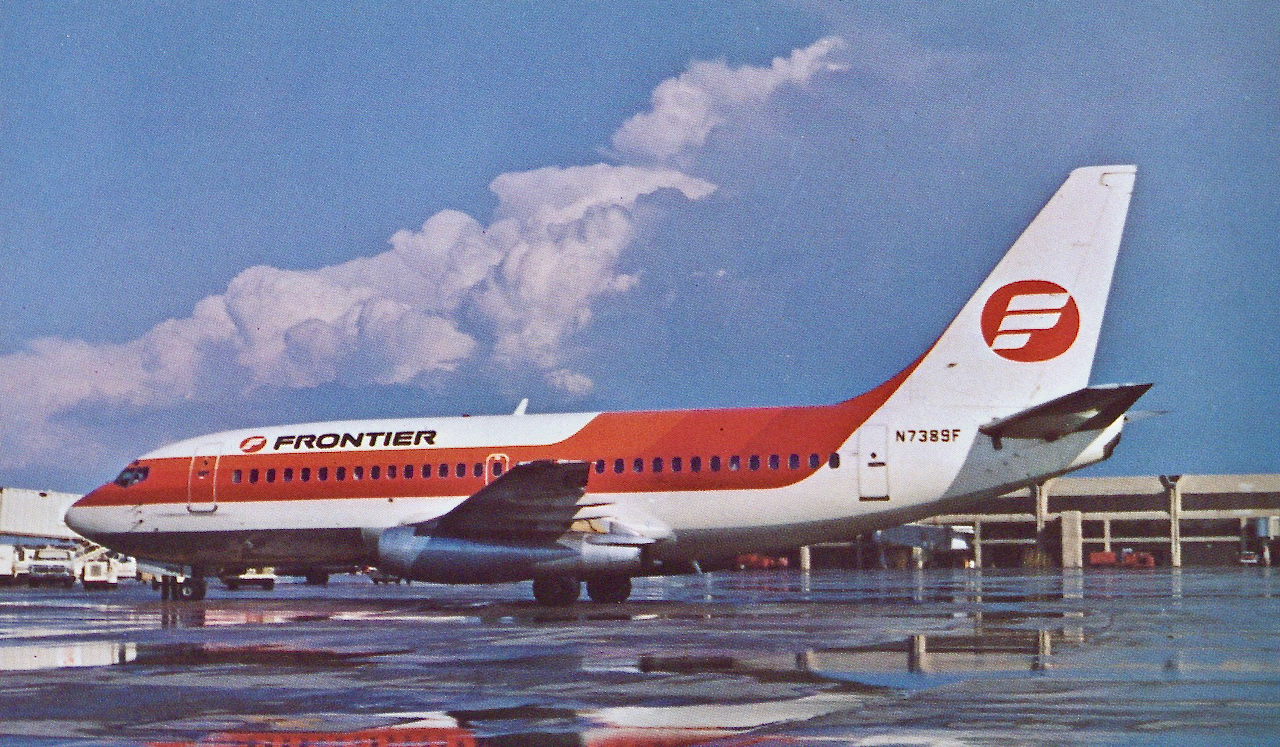
Pub’r LeAllan Henneberg, Platte City, Missouri; Dan Donovan photo. Ex Allan Van Wickler collection.
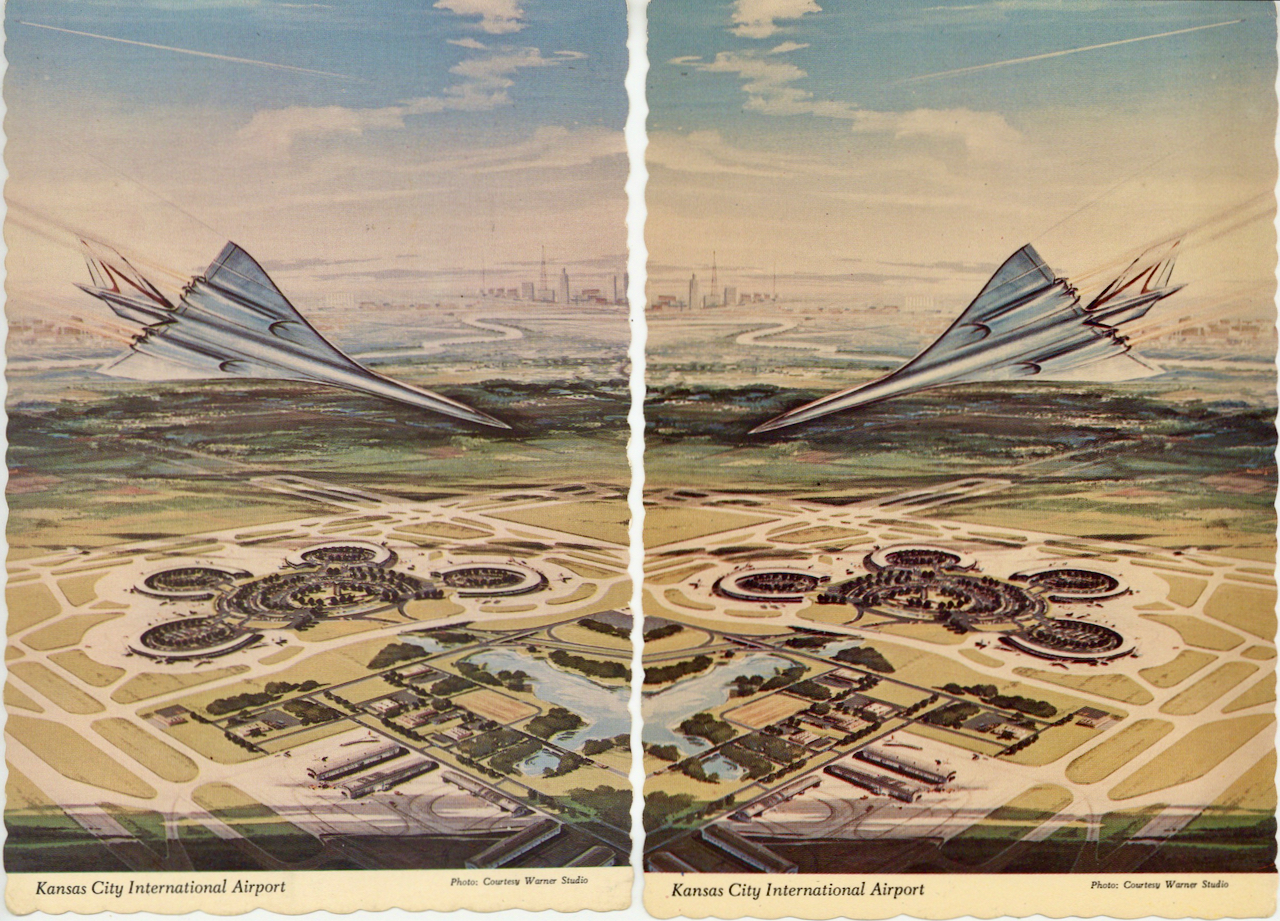
When the airport opened with three terminals, a fourth was contemplated as drawn here, but it was never built. The airport authorities also envisioned that SST supersonic aircraft would regularly use its mid-continent location, but that did not happen either. Here the postcard publisher apparently couldn’t decide the direction in which the ‘SST’ would land, so both directions were printed, each having the same postcard number.
Pub’r Holiday Productions, Independence, Missouri; printed by Dexter Press no. 60505-C.
New Terminal at MCI, 2023
With mandated new airport security procedures following the 9/11/2001 terror attacks, the design of MCI’s three circular terminals became increasingly inefficient because there was inadequate room and separation areas available for passenger security screening. Moreover, the other terminal facilities were becoming crowded and outdated.
In 2017 it was decided to build a single modern terminal to replace the three old terminals. The City broke ground on the project in March 2019. Old Terminal A was demolished to build the new terminal in its place. Terminals B and C continued in operation only until the opening of the new single terminal.
On February 28, 2023, the new $1.5 billion single terminal opened. Its spacious interior is filled with natural light, and features upgraded technology and amenities, beautiful local artwork, and convenient gate access. Security checkpoints have been consolidated into one area with flexible features. There are 40 gates and two concourses. Passageways and glass passenger boarding bridges provide expansive
views of the surrounding airfield. I do not have any postcards yet of the new MCI terminal, but it is featured in many photos, videos, and articles on the internet. For example, follow this link for photos by the architect.
NOTES: All postcards in this article are from the author’s collection. I estimate their rarity as follows: Uncommon: United Airlines aerial view of MKC; T-A-T Ford Trimotor at MKC; Mid-Continent Airlines DC-3 at MKC; group of TWA Constellations and Martins at MKC; and Frontier 737-200 at MCI. The rest are fairly common.
I hope to see you at Airliners International™ 2024 MCI, 26-29 June 2024, at the Hilton Kansas City Airport Hotel. You can see the outstanding new MCI terminal in person while attending the world’s largest airline history and collectibles show and convention, with nearly 200 vendor tables for buying, selling, and trading airline memorabilia (including postcards, of course), seminars, the annual meeting of the World Airline Historical Society, annual banquet, tours and more. Follow this link for more information: airlinersinternational.org.
Airliners International™ 2024 MCI will include an airline/airport postcard exhibit area. Please consider submitting an exhibit entry. Follow this this link for postcard entry guidelines.
Happy collecting. Marvin.
